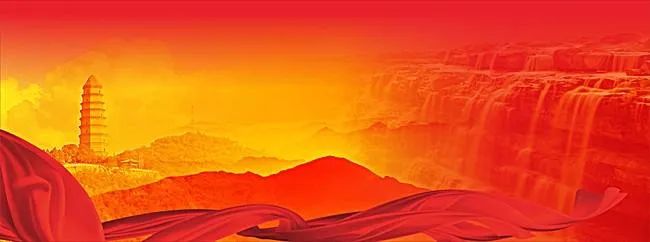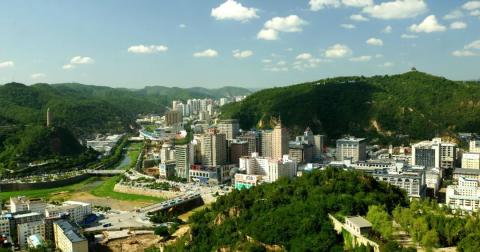
Yan'an is most famous for its Mausoleum of the Yellow Emperor, the Holy Land of the Chinese nation, Yan'an, the Holy Land of the Chinese Revolution, the natural scenery of the Hukou Waterfall on the Yellow River, and the loess customs and culture, and has unique cultural tourism resources.
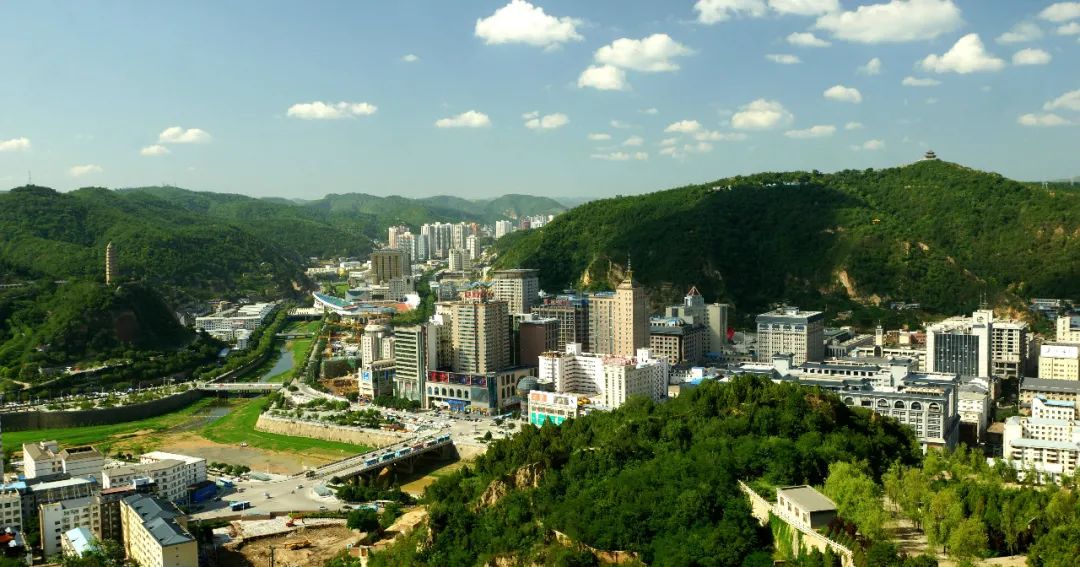

Yan'an is one of the birthplaces of the Chinese nation's 5,000-year civilization. Emperor Xuanyuan is honored as the "first ancestor of humanities" by descendants of Yan and Huang. The Mausoleum of the Yellow Emperor is a holy place for Chinese people to worship their ancestors and a common spiritual bond for the descendants of Yan and Huang. Every Tomb Sweeping Day, a large number of compatriots at home and abroad make a special trip to the Huangdi Mausoleum to pay homage to their ancestors.
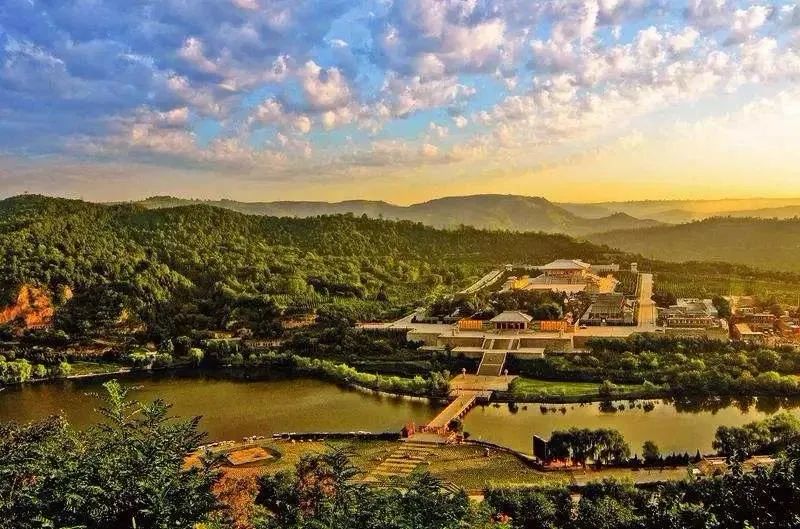
The Hukou Waterfall of the Yellow River is famous for its overwhelming majesty. "If you don't see it, the water of the Yellow River comes up from the sky and rushes to the sea never to return." The eternal poem by the poet Li Bai of the Tang Dynasty outlines the spectacular scene of the Hukou Waterfall. Its perseverance, courage and fearlessness are the true portrayal of the spirit of the Chinese nation!

Yan'an is located in the central and southern part of the Loess Plateau, which has given birth to a rich Loess customs and culture. The rough and bold Ansai waist drum, the high-pitched and exciting folk songs of northern Shaanxi, the simple and exquisite folk paper-cutting, the bold and bright Ansai peasant paintings, and the warm and cheerful Yangge of northern Shaanxi all express the Yan'an people's hope for a better life.

In the first half of the twentieth century, Yan'an wrote a glorious page in the history of the Chinese nation. From 1935 to 1948, Yan'an was the seat of the Central Committee of the Communist Party of China and a holy place of revolution. Chairman Mao, Premier Zhou and other older generation proletarian revolutionaries lived and fought here for 13 spring and autumn. They strategized, won thousands of miles, led and commanded the War of Resistance Against Japan and the War of Liberation, and laid a solid foundation for the founding of New China.

During these 13 years, Yan'an experienced a series of major events that influenced and changed the course of Chinese history, leaving behind a large number of precious revolutionary cultural relics, revolutionary memorial sites and rich spiritual wealth, including the "Chinese Revolution Museum" It has the reputation of "city" and is the country's three major educational bases for patriotism, revolutionary tradition and Yan'an spirit.
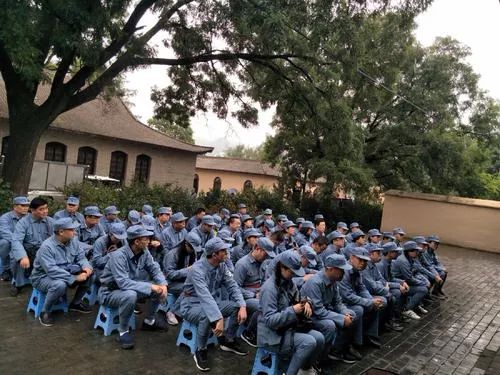
The Yan'an Revolution Memorial Hall is a must-see for every visitor, inspection, and tourist in Yan'an. It was built in 1950 and is the earliest revolutionary memorial hall built after the founding of New China. Later, it moved to its current location in Wangjiaping in 1973, and the new building was completed in 2009.
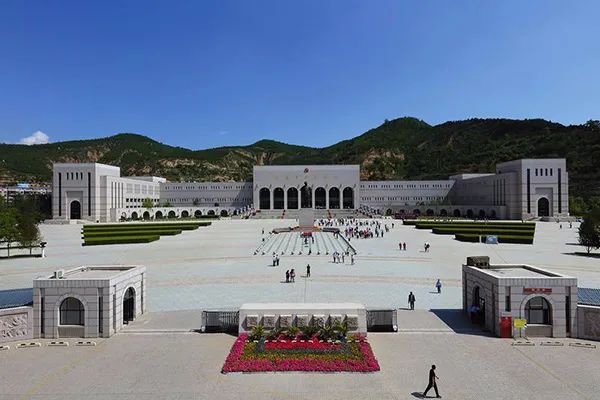
The Yan'an Revolution Memorial Hall system reflects the establishment of the Central Red Army after the arrival of the Central Red Army in northern Shaanxi from October 1935 to October 31948. The glorious journey of the Anti-Japanese National United Front, the launch of the large-scale production movement, the rectification movement, and the holding of the Seventh National Congress of the Communist Party of China, until the final victory in the Liberation War.
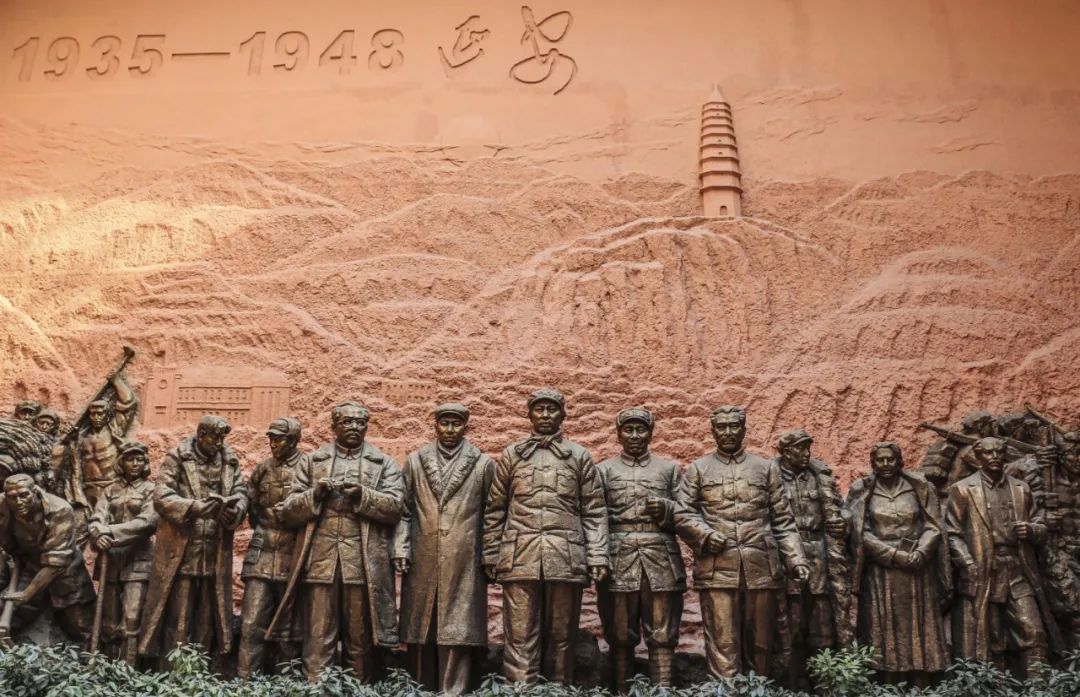
In front of the memorial hall is a large square. In the middle of the square stands a majestic bronze statue of Mao Zedong, which is 8.15 meters high. The base is engraved with "Mao Zedong in Yan'an" handwritten by General Secretary Jiang Zemin.
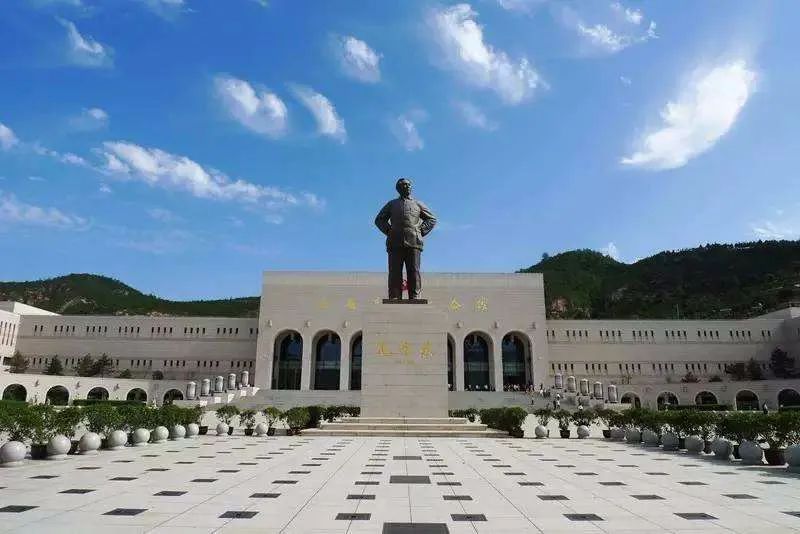
The steps leading into the memorial hall are divided into three stages, which is a metaphor for the three stages the Communist Party experienced in Yan'an: the Agrarian Revolution, the Anti-Japanese War, and the War of Liberation.

The memorial hall consists of six exhibition halls, which brings together the history of Yan'an's 13-year revolutionary activities. It displays nearly 2,000 photos and cultural relics. It not only displays various revolutionary souvenirs, but also models. , oil paintings, statues and scene restorations and other auxiliary exhibits, and use sound, light, electricity and other modern scientific and technological means to enhance the dynamic effect of the display.
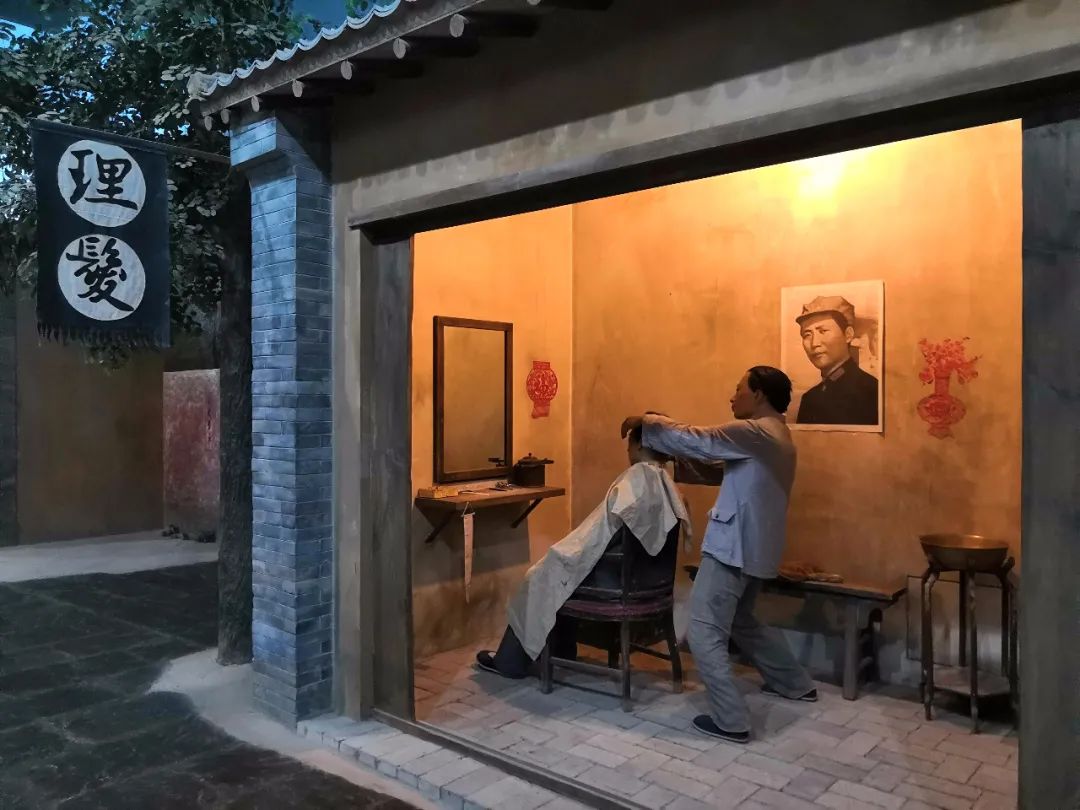
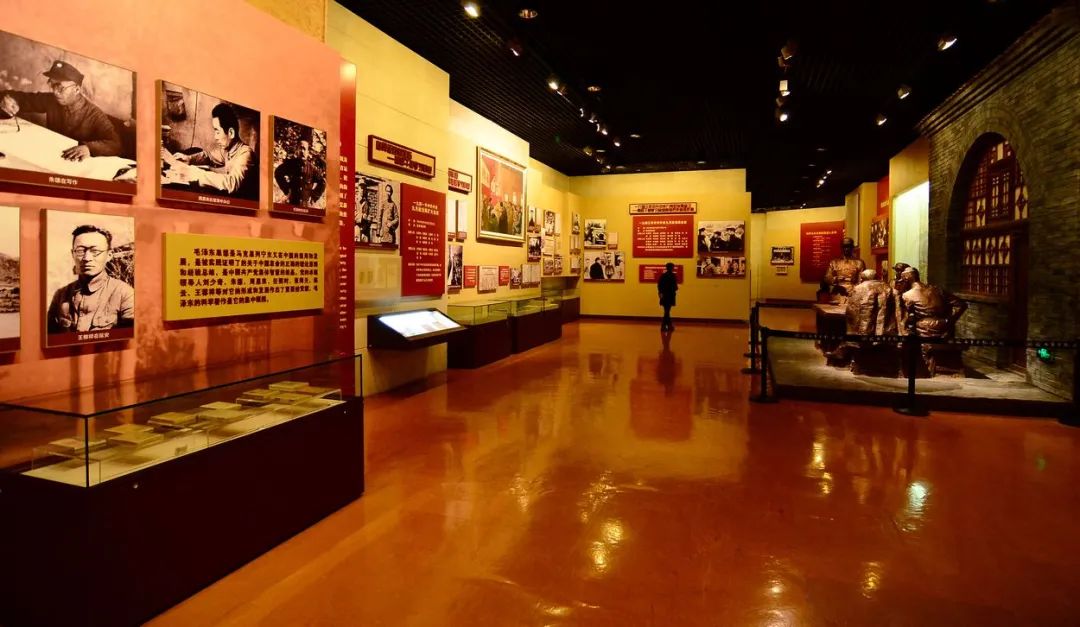
The former revolutionary site of Yangjialing was the former residence of the Central Committee of the Communist Party of China. After the Japanese bombed Yan'an City in November 1938, the Central Committee of the Communist Party of China moved here from the foothills of Fenghuang Mountain in the city that night until 194310< In y7>, Mao Zedong and other leaders moved from here to Zaoyuan one after another.
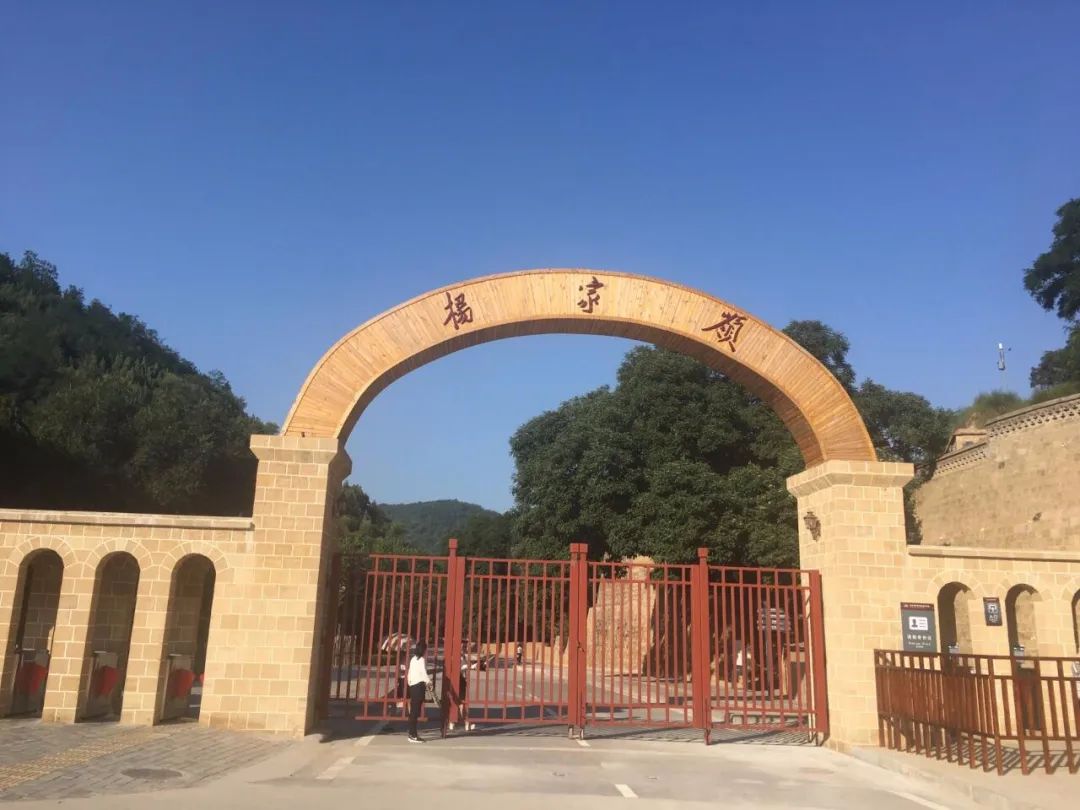
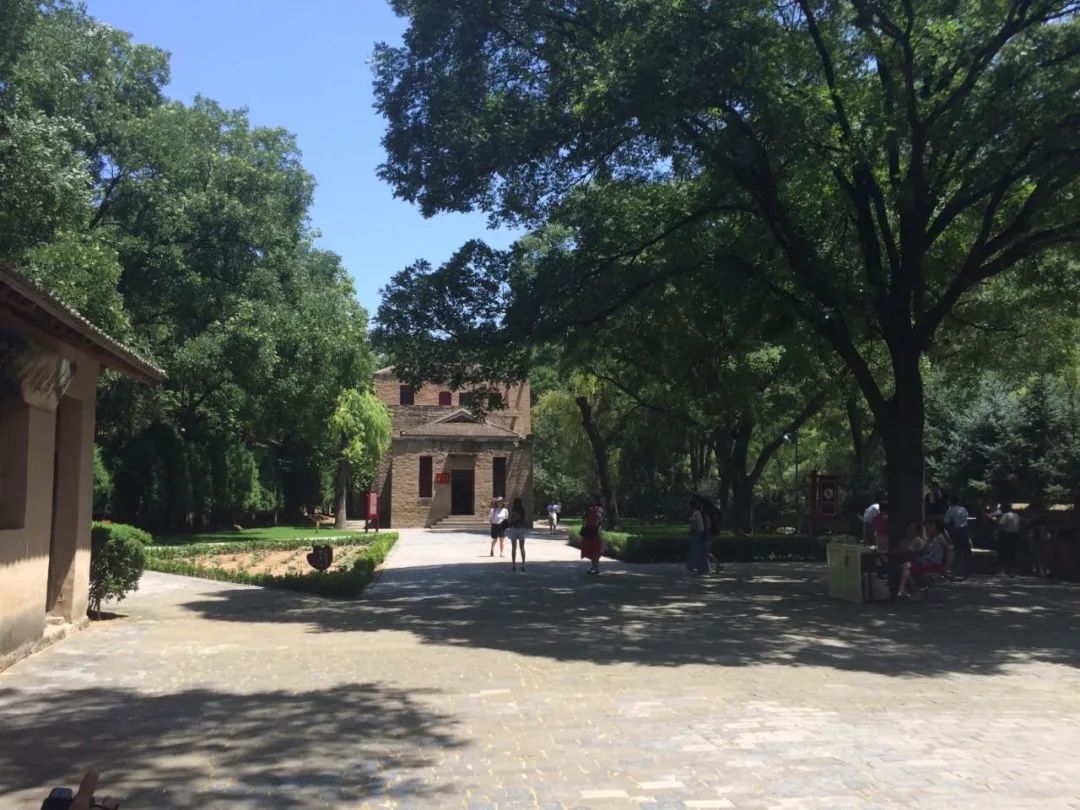
During this period, the Central Committee of the Communist Party of China commanded the battlefields behind enemy lines in the War of Resistance Against Japanese Aggression and led the War of Liberation. It launched a vigorous mass production movement and the Yan'an Rectification Movement, and convened the Seventh National Congress of the Party and the Yan'an Forum on Literature and Art.

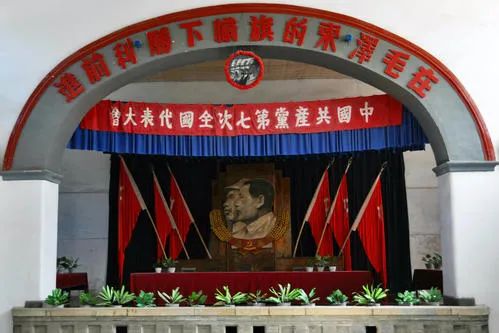

Today, the main buildings at the old revolutionary site of Yangjialing include the Central Auditorium (the site of the Seventh National Congress of the Communist Party of China), the site of the Yan'an Forum on Literature and Art, the former residences of leaders such as Mao Zedong, Zhou Enlai, and Zhu De, the General Office of the Central Committee, the Organization Department of the Central Committee, and the Propaganda Department. wait.

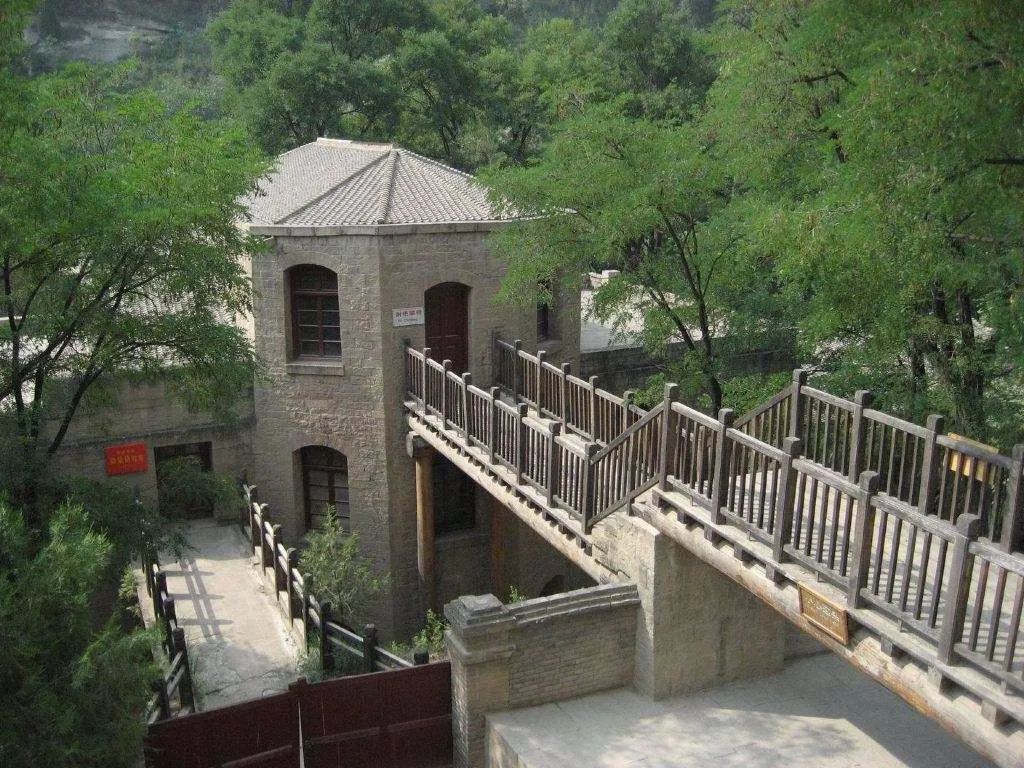
Zaoyuan was originally a landlord's manor. After the Central Committee of the Communist Party of China moved to Yan'an, it became the residence of the Ministry of Social Affairs of the Central Committee, so it was renamed "Yanyuan". From 5 in 1944 to 3 in 1947, the Secretariat of the Central Committee of the Communist Party of China moved here from Yangjialing, so there is a "Japanese War of Resistance Against Japanese Aggression" Zhongnanhai".
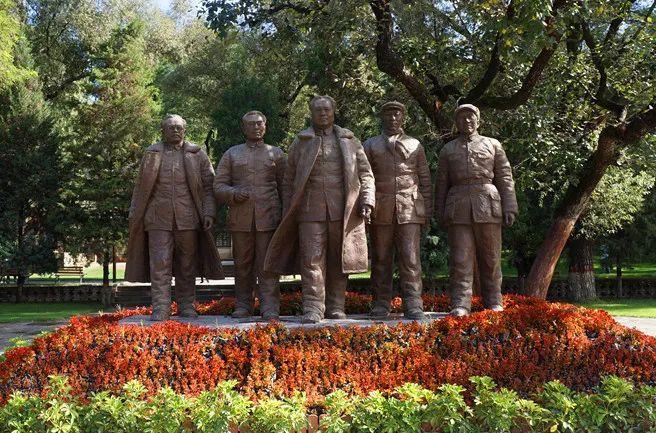
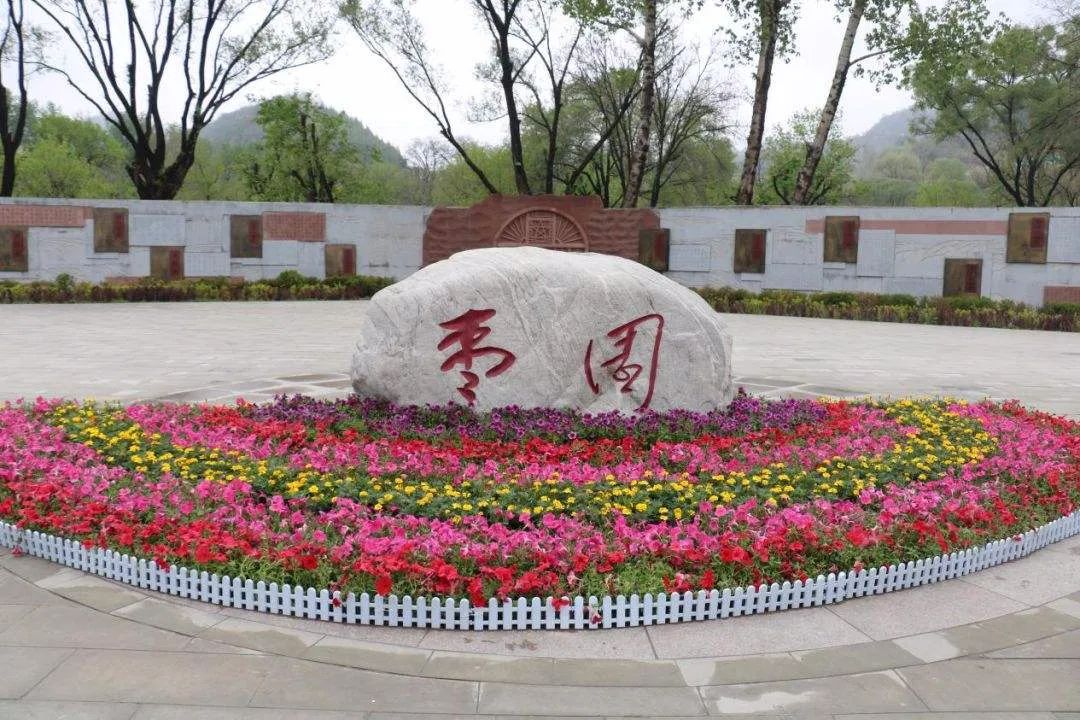
Here, the Central Committee of the Communist Party of China continued to carry out the Yan'an Rectification Movement and the Mass Production Movement, prepared for the Seventh National Congress of the Communist Party of China, led the country's military and civilians to victory in the Anti-Japanese War, and led the country's people to fight for democratic unity and peaceful nation-building, and to fight against the Kuomintang die-hards There was a tit-for-tat struggle.
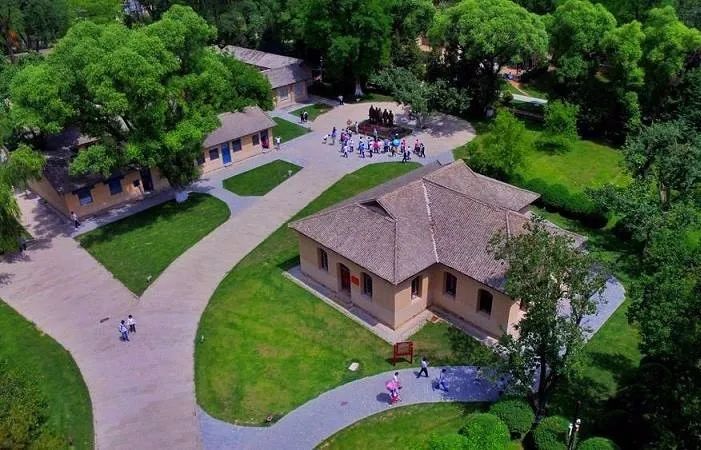

Zaoyuan is a garden-style revolutionary memorial site full of pastoral scenery, with lush vegetation and a quiet environment.
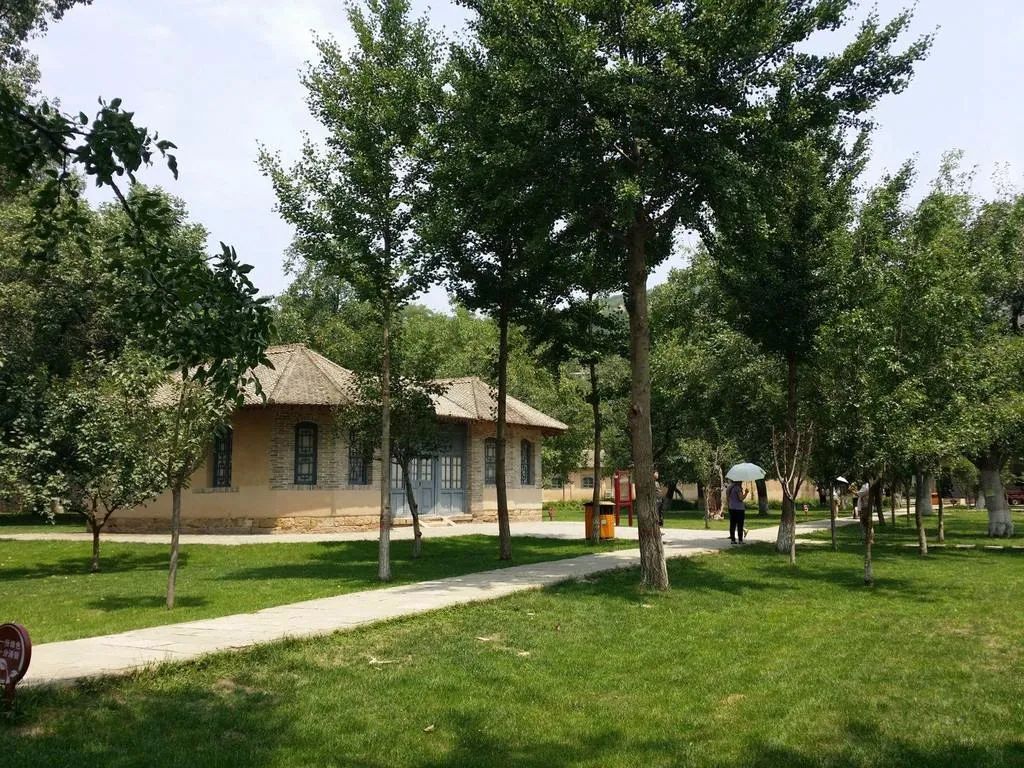

The scenic area is open to scenic spots such as the Auditorium of the Central Secretariat, the former residences of leaders such as Mao Zedong, Zhou Enlai, and Zhu De, the "Serving the People" podium, and Xingfu Canal.

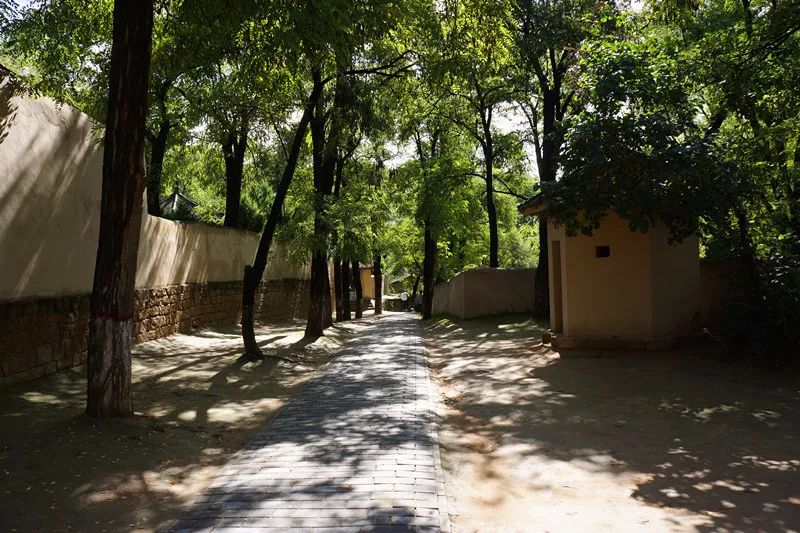
Wangjiaping Revolutionary Site is where the Central Military Commission and the Eighth Route Army headquarters are located. From 19378 to19473, the founding leaders of the Military Commission and the headquarters led the Eighth Route Army and the New Fourth Army here. The arduous eight-year war of resistance.
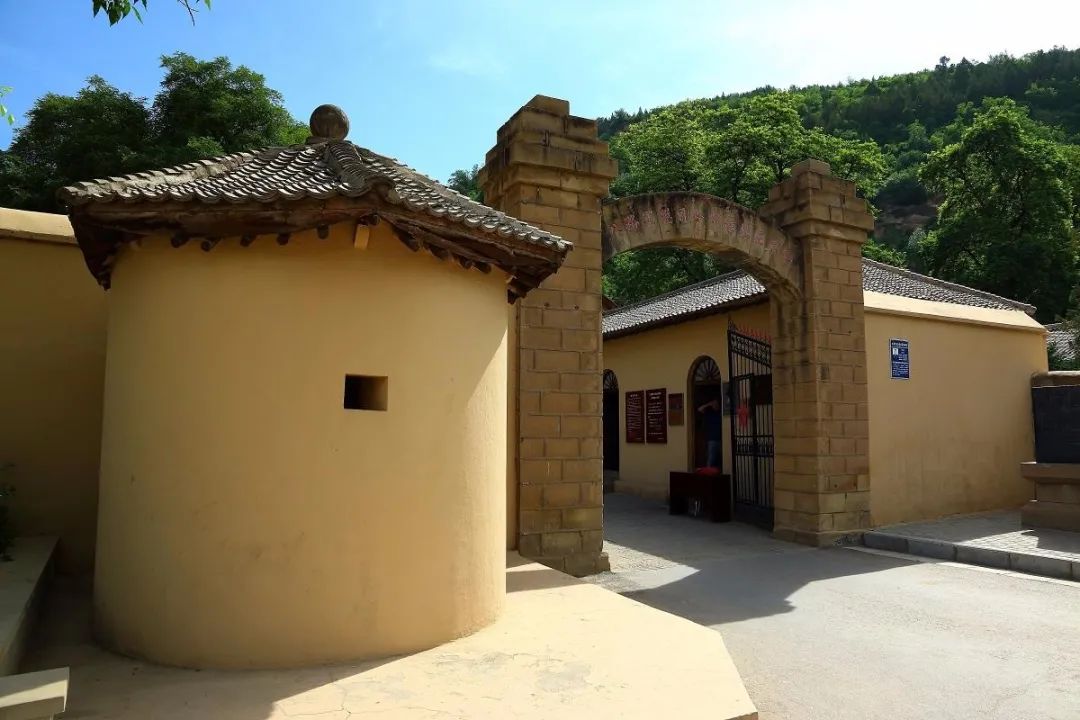
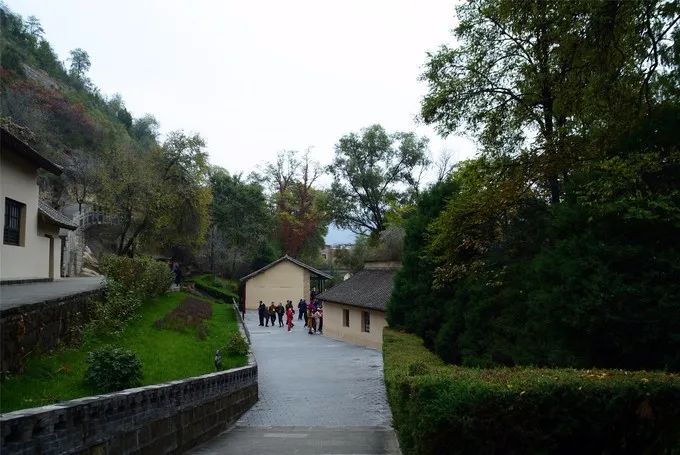
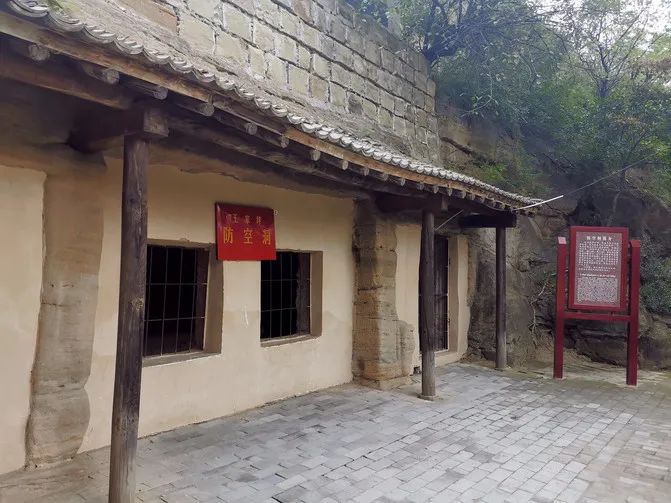

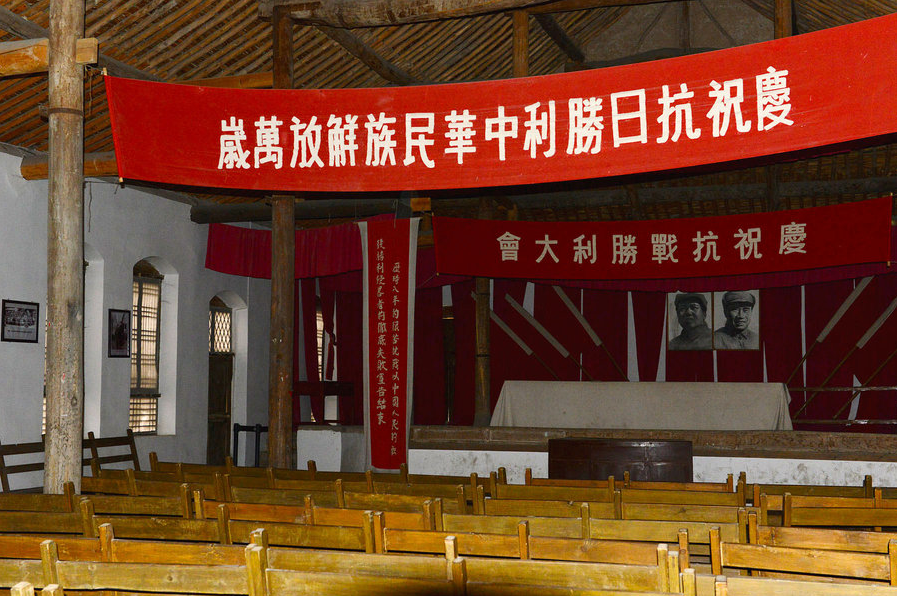
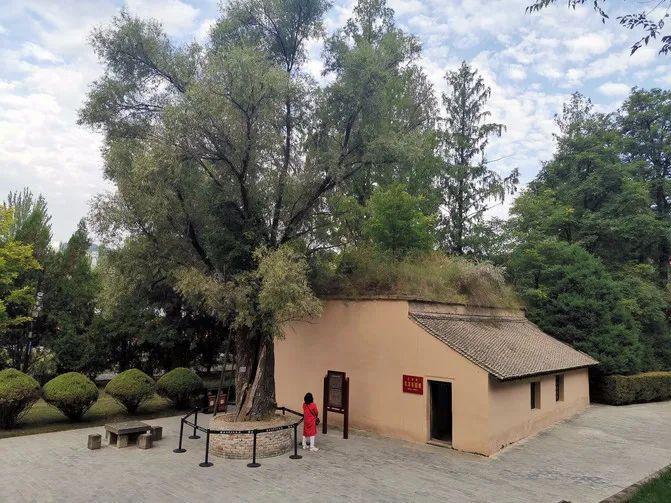

Pagoda Mountain is located in the center of Yan'an City. It was called Jialing Mountain in ancient times. It was called "Pagoda Mountain" because of the pagoda built on the mountain. Pagoda Mountain integrates natural landscapes, cultural landscapes, historical relics and revolutionary sites.
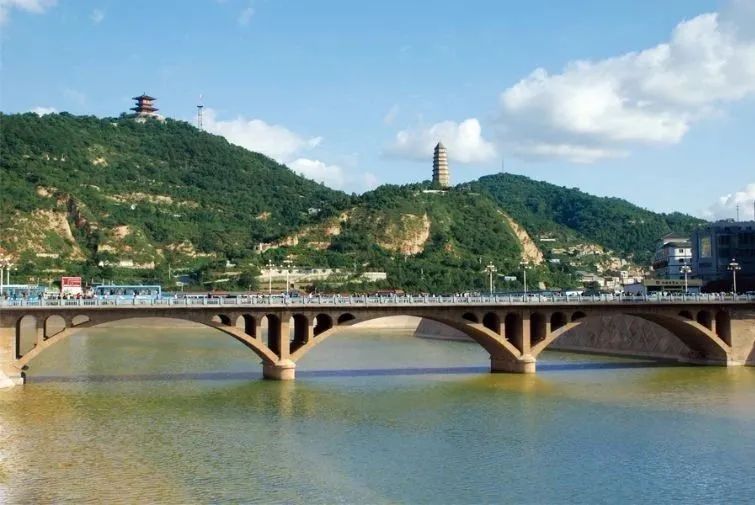
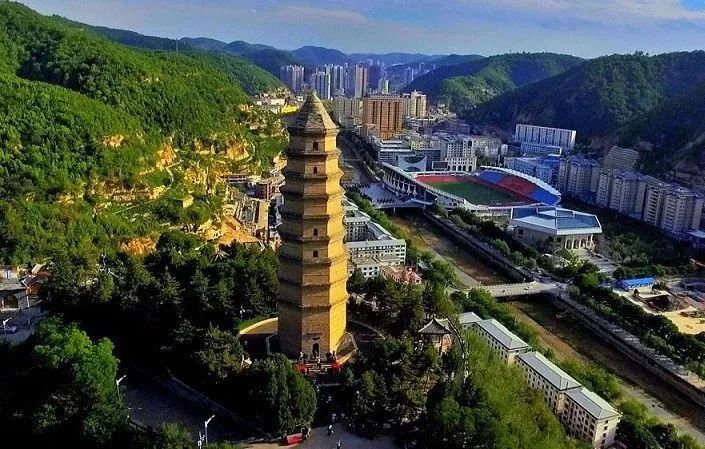
The pagoda on the mountain was built in the Tang Dynasty and was rebuilt in the Ming Dynasty. The tower is a pavilion-style brick tower with a nine-story height of approximately 44 meters. Climb to the top of the pagoda and you can see the whole view of Yan'an City.
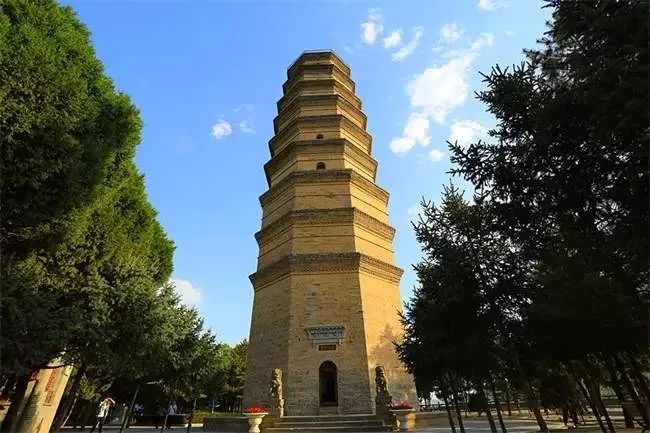
Since the Central Committee of the Communist Party of China stationed in Yan'an, this ancient pagoda has become the symbol and symbol of Yan'an, the revolutionary holy place, and a must-visit place when visiting Yan'an. "I have returned to Yan'an several times in my dreams, holding Pagoda Mountain in my arms" is a famous line by the famous poet He Jingzhi, which enthusiastically eulogizes the sacred status of Pagoda Mountain in the hearts of the Chinese people.
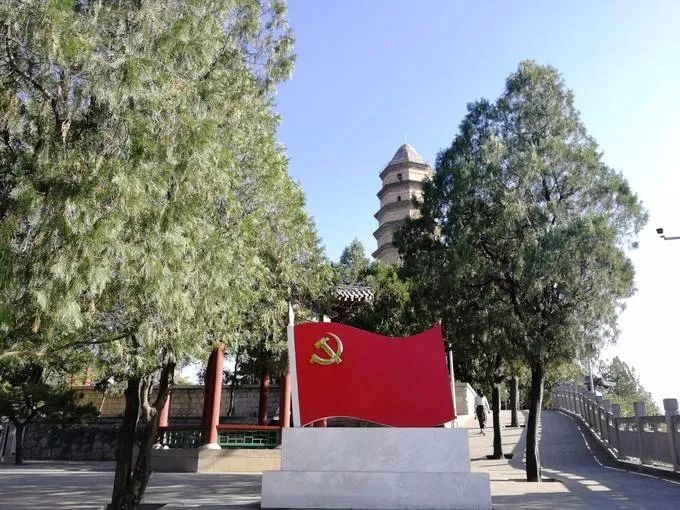
At the west foot of the mountain and facing the street is a group of cliff carvings and a forest of steles. Among the Moyan carvings of the past dynasties, the most famous are the inscriptions "Jialing Mountain" and "There are tens of thousands of armored soldiers in the chest" written by Fan Zhongyan in the Song Dynasty. The "Impression of Yan'an" light show at Pagoda Mountain at night is very stunning.
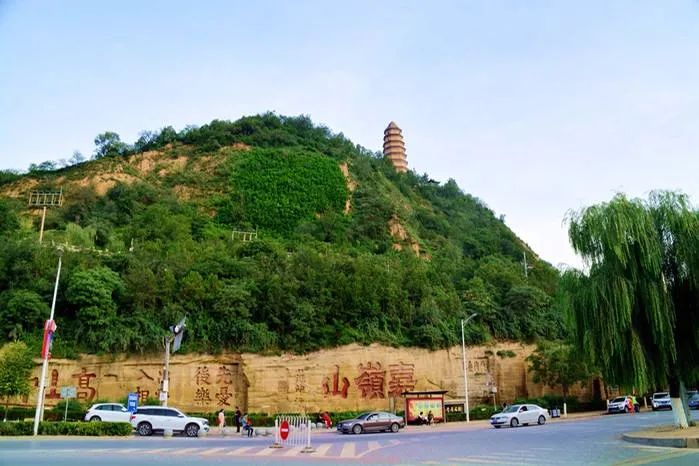
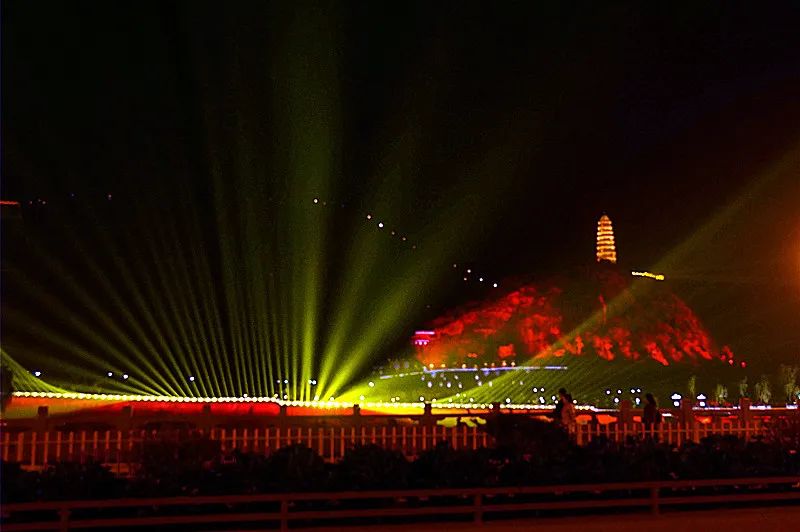
Nanniwan is located 45 kilometers southeast of Yan'an City. It is the birthplace of the military reclamation career of the Communist Party of China and the birthplace of the Nanniwan spirit of self-reliance and hard work.
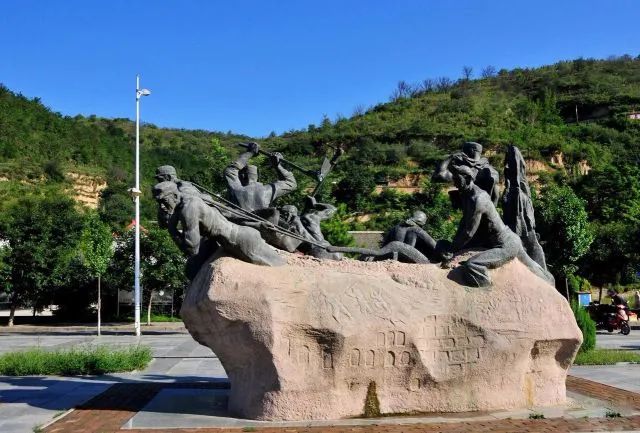
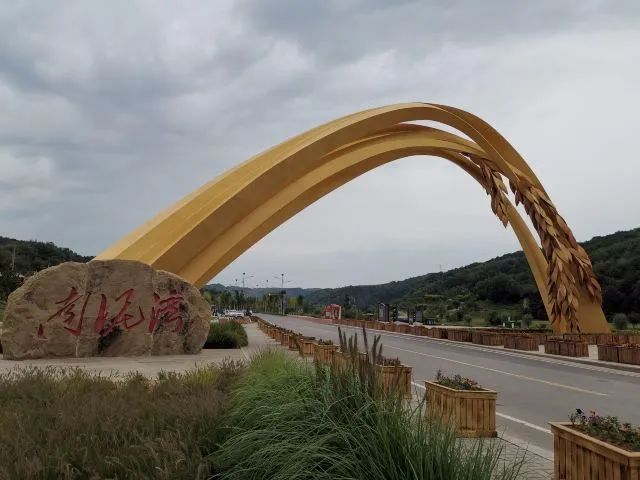
After the Anti-Japanese War entered a stalemate stage, the Kuomintang implemented a tight military encirclement and economic blockade on the Shaanxi-Gansu-Ningxia Border Region. Mao Zedong promptly put forward the call to "do it yourself" and "have enough food and clothing" to mobilize the military and civilians to carry out the mass production movement.
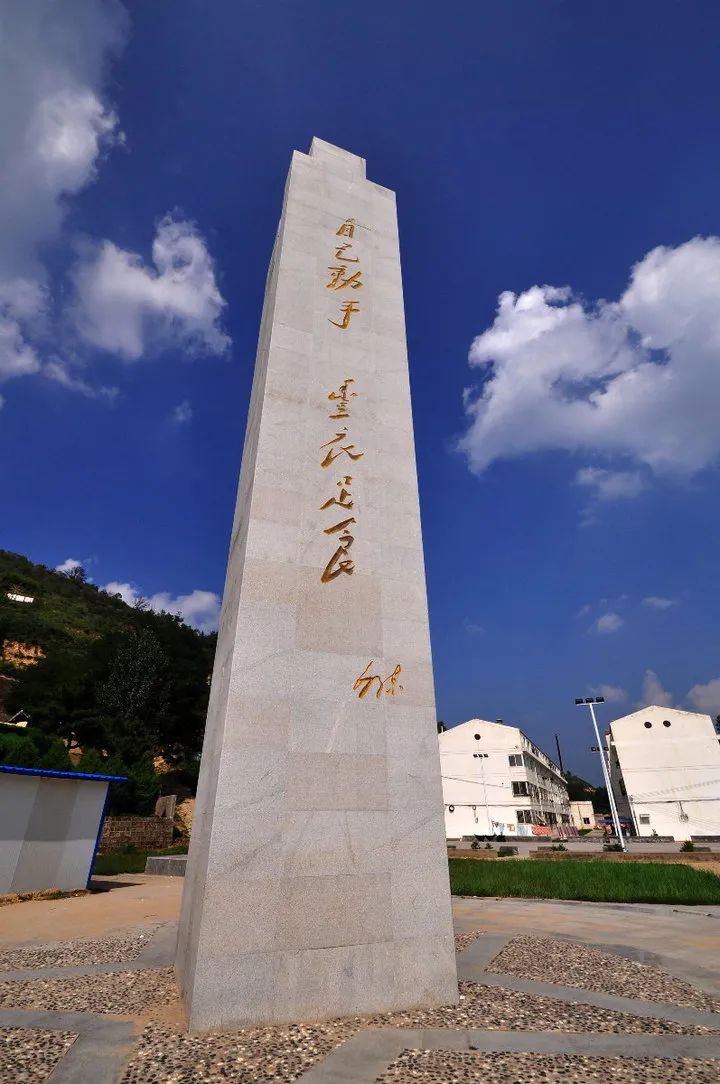
In the spring of 1941, the Eighth Route Army's 359th Brigade, led by brigade commander Wang Zhen, stationed in Nanniwan to open up wasteland for farming. They overcame many difficulties and turned the deserted Nanniwan into a deserted Nanniwan with their own hands and sweat. "There are crops everywhere, cattle and sheep everywhere", Northern Shaanxi is like Jiangnan.


Nowadays, the main attractions for tourists to visit in Nanniwan include: the large terraces that were reclaimed in those days, the Nanniwan Production Movement Exhibition Hall, Mao Zedong’s former residence when he inspected Nanniwan, the former site of the 359th Brigade, Kowloon Spring and the Martyrs Monument, etc. .

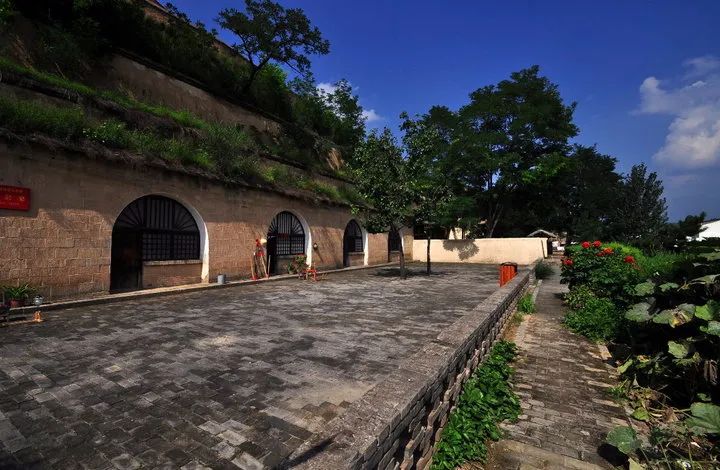
The Nanniwan Mass Production Movement Exhibition Hall introduces the history of the Nanniwan Mass Production Movement in detail through objects and pictures. Party Emblem Square is the symbol of Nanniwan Red Cultural Town. Yan'an Nanniwan College is built in the red cultural town.
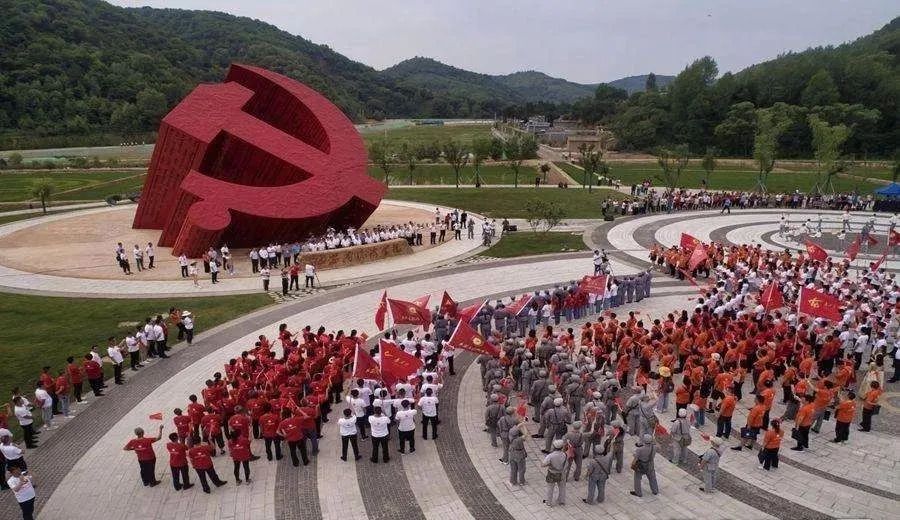
Liangjiahe Village is located in Wen'anyi Town, Yanchuan County, Yan'an City. Many years ago this was an unknown village, synonymous with poverty and backwardness.

In 1969, Xi Jinping, who was less than 16 years old, and other 14 Beijing educated youths came from the prosperous capital city to a remote valley and began their journey in this place called Liangjiahe Village. The years when educated youth joined the queue in y5>7.
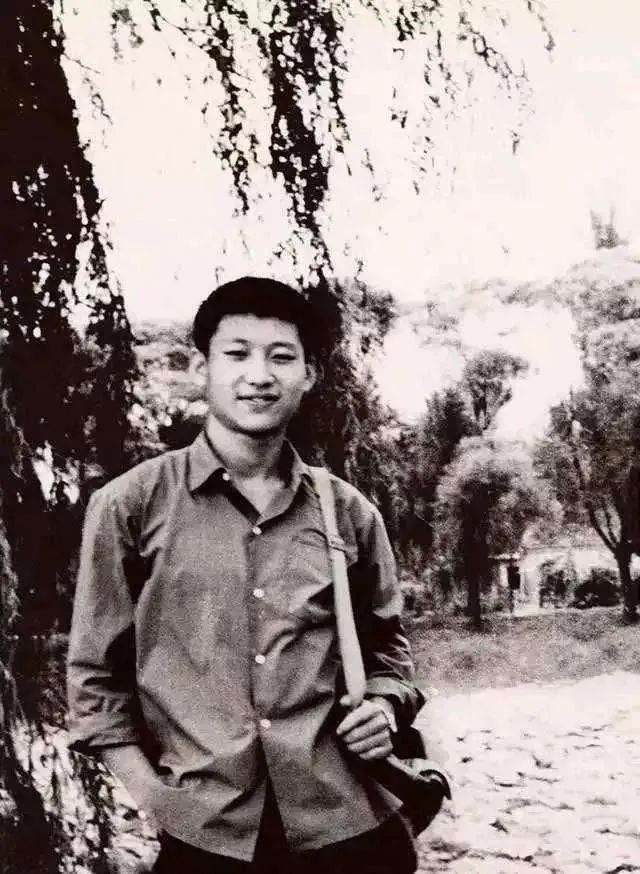

Liangjiahe Village was the first stop for General Secretary Xi Jinping to enter the society. It was a "place of great learning." He joined the Communist Party of China here and experienced the transformation from being an educated youth to being the secretary of the brigade party branch.

The first visit was to follow the guide to visit the Village History Museum of Liangjiahe Village and learn about the general situation of Liangjiahe Village.
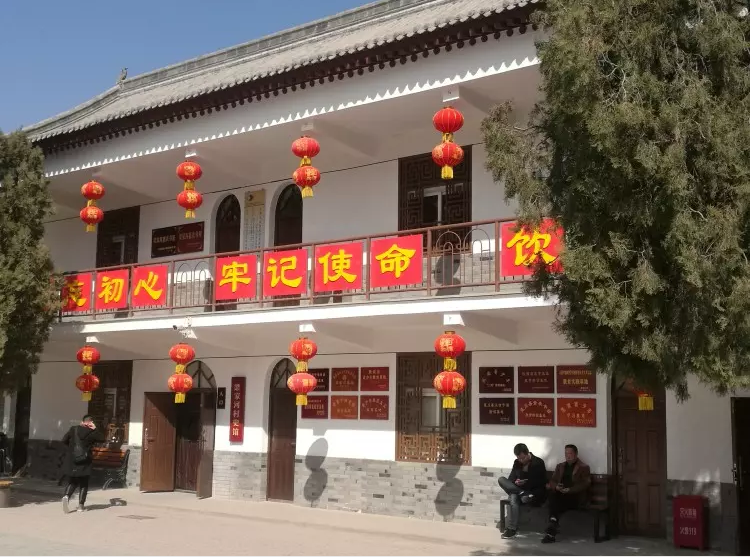

Then visit the former residence of the educated youth. The former residence of the educated youth was built in 1970 as a 6 Kongshi cave dwelling specially built for the educated youth. Xi Jinping and the educated youth lived here at that time.
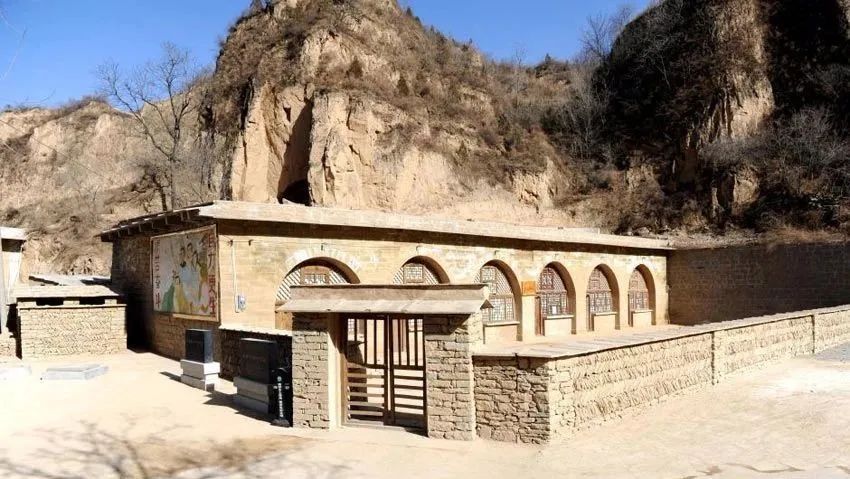
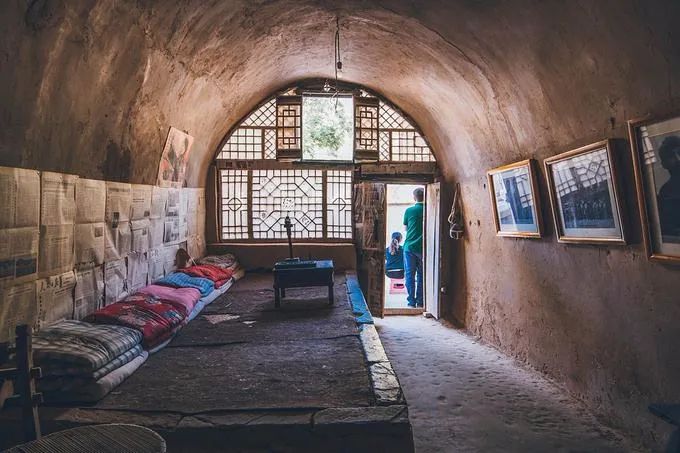
Visit the first biogas digester, water well, and check dam in Shaanxi that President Xi participated in the construction of that year, and experience General Secretary Xi's hard life of jumping in line, his enterprising struggle, and the deep feelings he and his fellow villagers established through hard work.
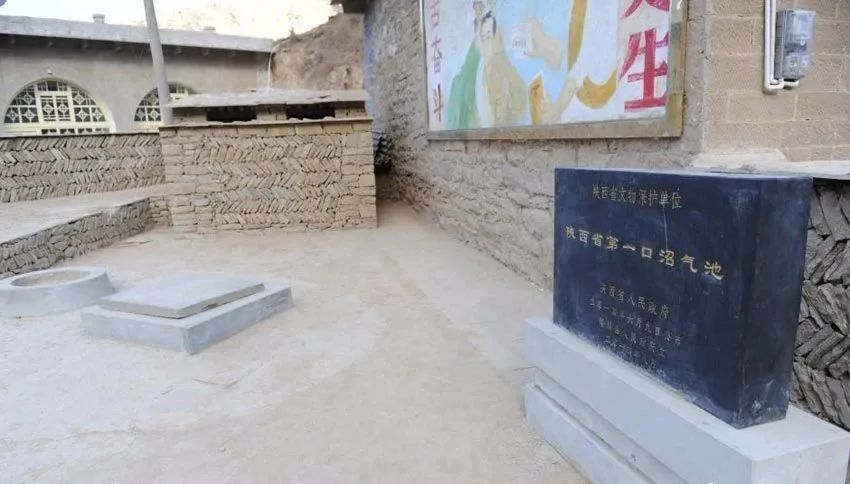
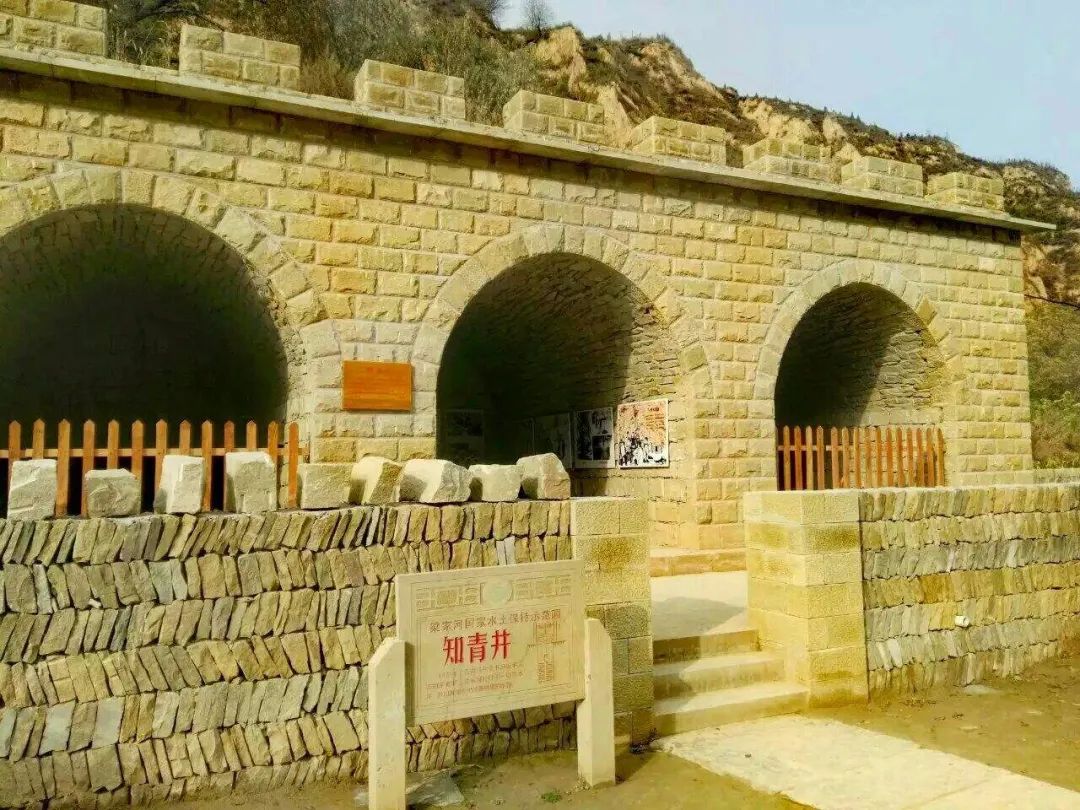
The large-scale historical stage play "Yan'an Nursery" is a red classic created by Shaanxi Tourism Group with a small theme, a big realm, a small perspective, a big background, a small story, and a big spirit. The profound spiritual connotation, superb stage performance and touching storyline moved the audience to tears.
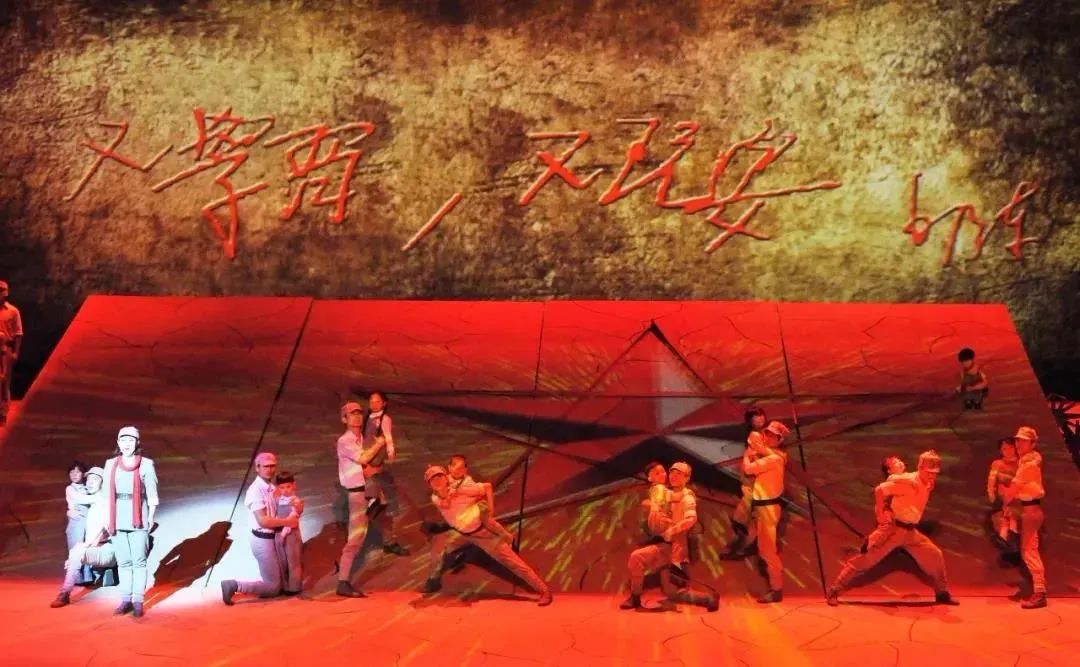
The performance is based on the red history of Yan'an Nursery, based on a large number of precious first-hand materials, real stories and character prototypes, with the children in the nursery as the protagonists, and tells the story of what happened to the descendants of the revolution during the Yan'an Revolution The story of the body is condensed into a 70 minute stage performance.
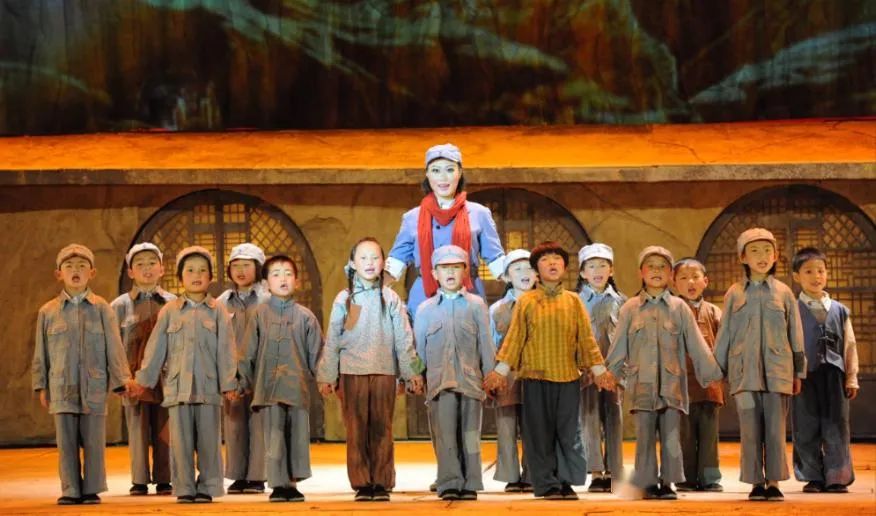
The plot of the performance changes from the grand war theme. Through the story of the healthy growth of revolutionary offspring in the nursery, it reflects the bloody but high-spirited environment of the great era, and fully embodies the selfless maternal love and the revolutionary spirit of fearless sacrifice. Integration uses universal emotions to draw out the lofty moral character and great sentiments of the Chinese Communists.
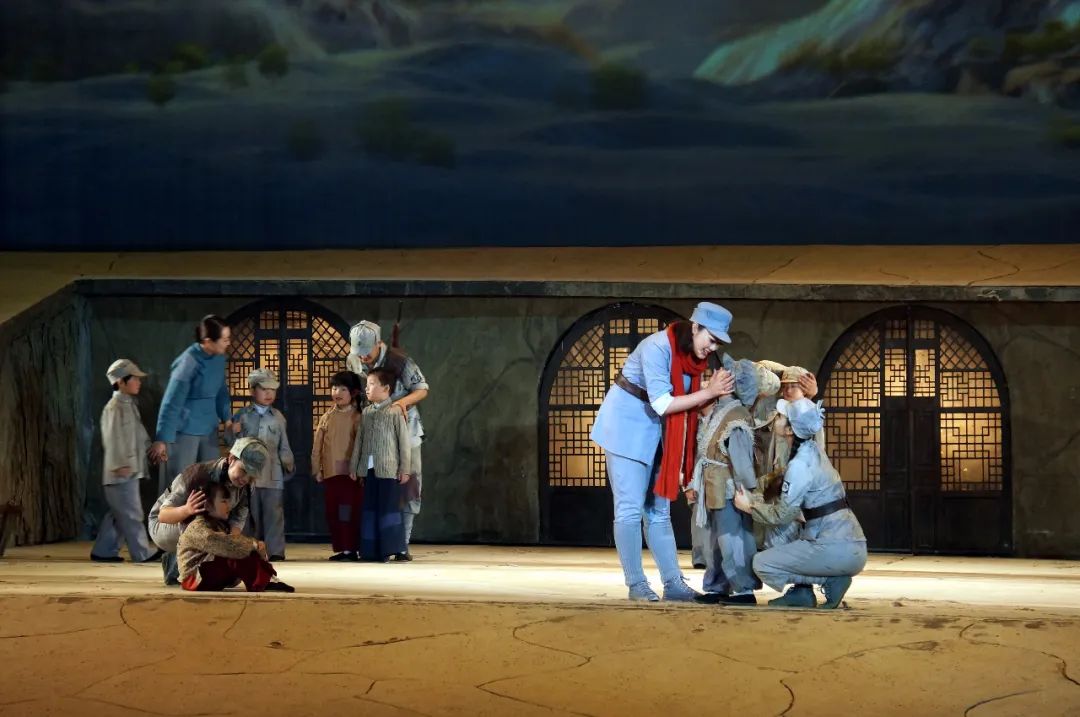

Zaoyuan Cultural Square is adjacent to the Zaoyuan Revolutionary Site and China Yan'an Cadre College. The square is mainly composed of the Dongfanghong Grand Theater and the "Yan'an 1938 Block". Dongfanghong Grand Theater, the landmark building of Zaoyuan Cultural Square, is the venue for the popular show "Yan'an·Yan'an" and the 4D movie "A Liang's Long March".


The red show "Yan'an·Yan'an" tells the story of Bai Yanming, a female college student who came to Yan'an from Shanghai in the 1930s and 1940s, and the story of fighting, living, learning and growing up with two Red Army soldiers, Ouyang Jian and Shuan Zhu.
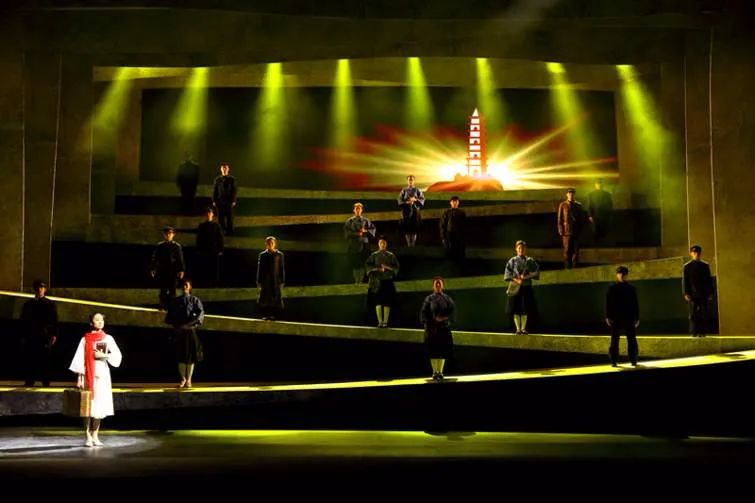
The performance combines the rich historical pictures of the Yan'an revolutionary period with Yan'an folk culture through scenes such as pilgrimage to the Holy Land, the Long March Reunion, mass production, and the Great Lu Arts, and uses dazzling stage performance art to "activate" the historical memory of the Red Holy Land, thus bringing people The audience received a strong psychological shock and audio-visual impact.

The whole performance also designed many interactive links. The actors walked to the audience to hand out leaflets, scattered red stars, and interacted with red songs to stimulate the audience's enthusiasm. Yangko performances, folk song interactions, and red dates were presented to lead everyone to appreciate the customs of northern Shaanxi, allowing the audience to "immerse themselves in the performance." Its situation "returns to the war years.

This is a neighborhood built with the coordinates of old Yan'an in 1938. The moment you enter the block, the scenery here will instantly take you back to the old Yan'an before 1938.
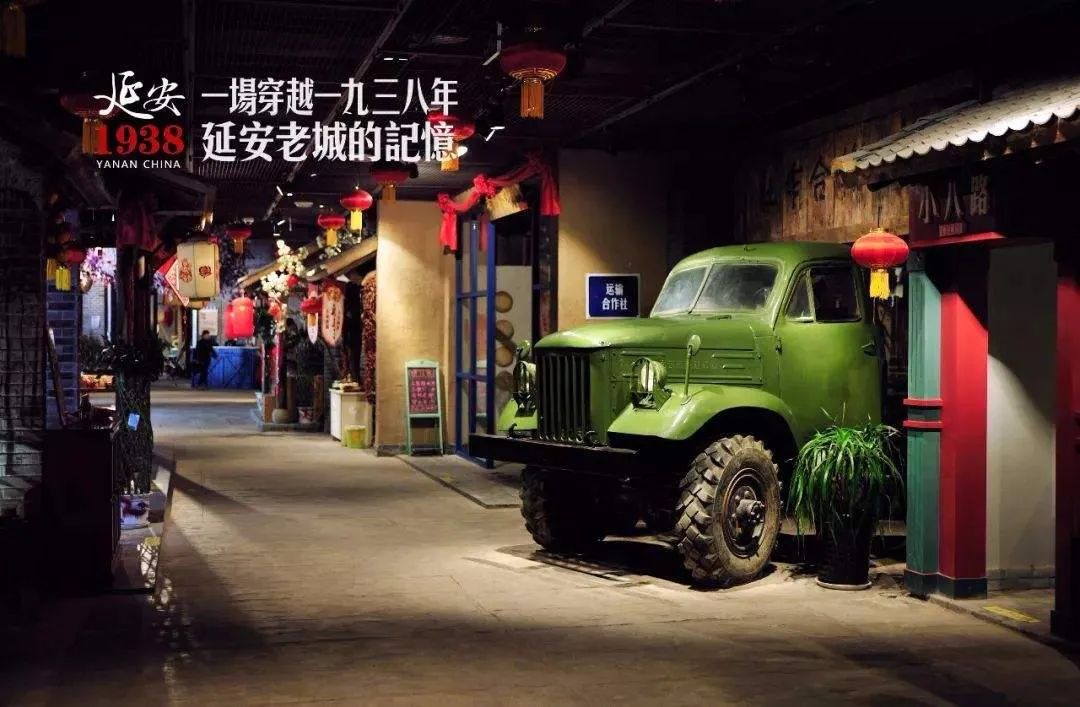

Yan'an 1938 Block contains the essence of delicacies of 13 counties. Here you can feast on the essence of Yan'an. You can also buy Yan'an's mainstream specialties such as red dates, millet, and cereals here.
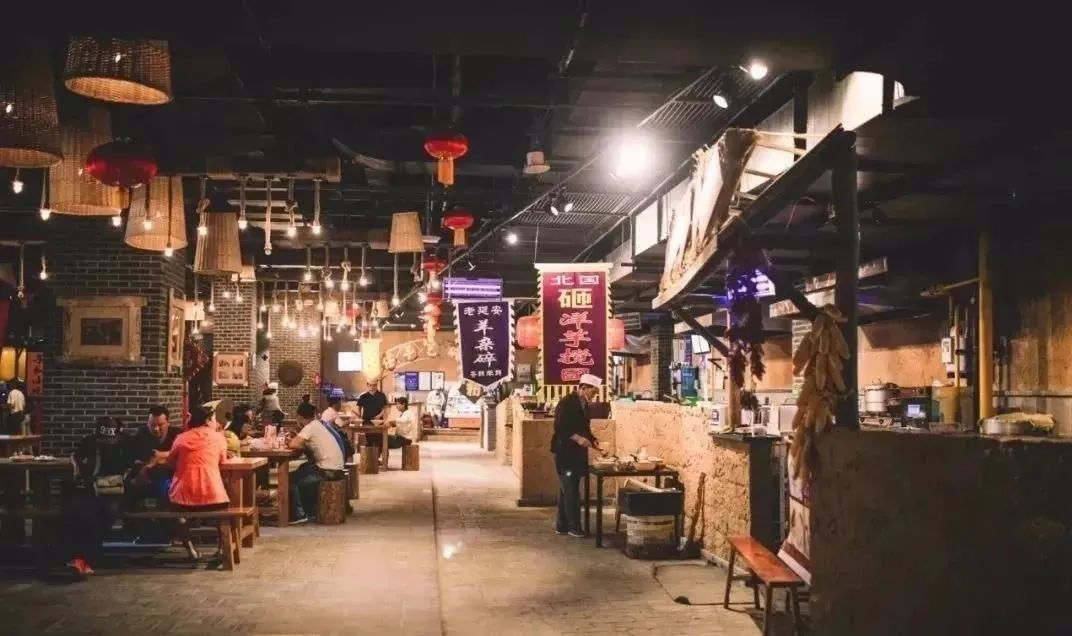

Here you can also listen to authentic northern Shaanxi storytellers show you the northern Shaanxi accent in the teahouse, experience grain embroidery , Yan'an folk paper-cut art and other special activities.

If you want to feel the atmosphere of a city, you must experience the fireworks of the local night market. The Erdao Street Night Market in the city center is a must-visit place for many tourists. It is synonymous with Yan'an night market culture and a beautiful picture of Yan'an food culture. business card.
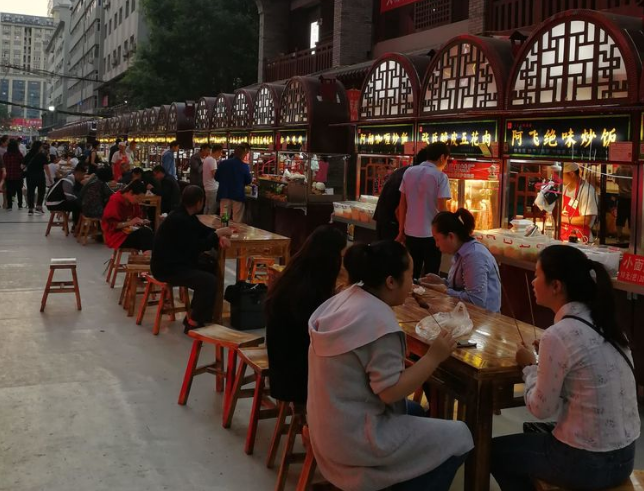
Potato rubs, mixed noodles, fried haggis, haggis soup, extended barbecue, stewed lamb trotters... these are all unique delicacies of Yan'an, and if you want to catch all these delicious foods, you must go to Erdao Street.
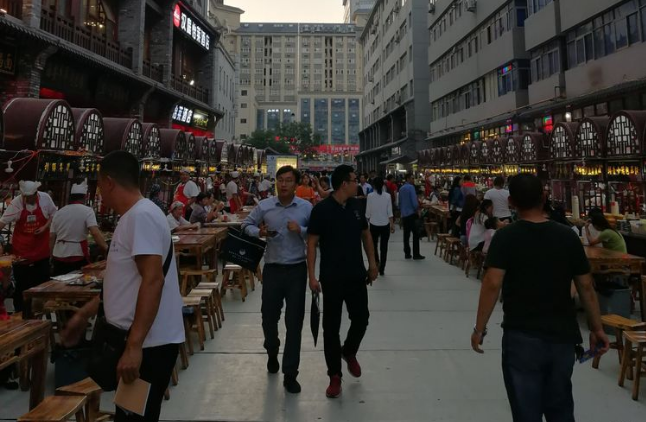
The Hukou Falls of the Yellow River is a scenic spot shared by Yan'an City, Shaanxi Province and Linfen City, Shanxi Province. It is a natural waterfall formed when the middle reaches of the Yellow River flows through the Qinjin Grand Canyon.
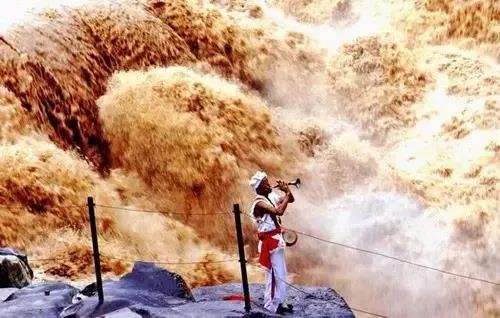
Thousands of miles of rushing Yellow River water roared all the way to this point. The 500 torrent was suddenly restrained by the stone walls on both sides and converged into one stream, roaring down in the 30 meter drop. Entering the deep pool, it feels like pouring out of a huge pot, hence the name "Hukou Waterfall".
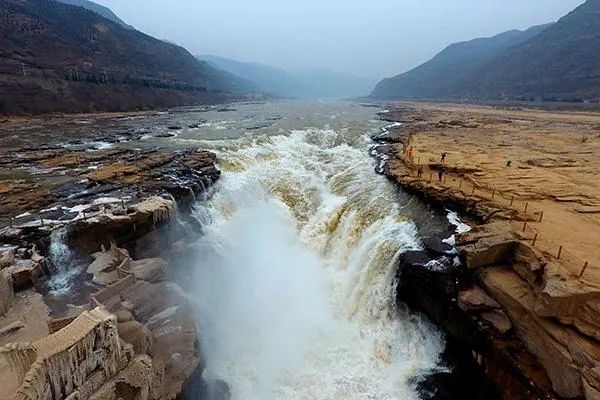
Hukou Waterfall is more than 50 meters wide, with a drop of nearly 30 meters. The roaring waves can be heard for miles. It is one of the three largest waterfalls in China along with Guangxi Detian Waterfall and Guizhou Huangguoshu Waterfall.
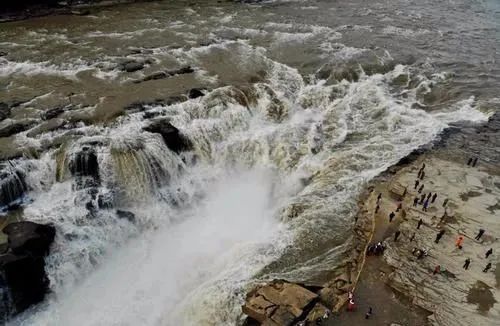
"The wind is roaring, the horses are braying, the Yellow River is roaring..." The majestic and exciting "Yellow River Cantata" sings about the spectacular scene of the Hukou Falls of the Yellow River flowing down, the sound of the waves thundering, and the galloping forward.
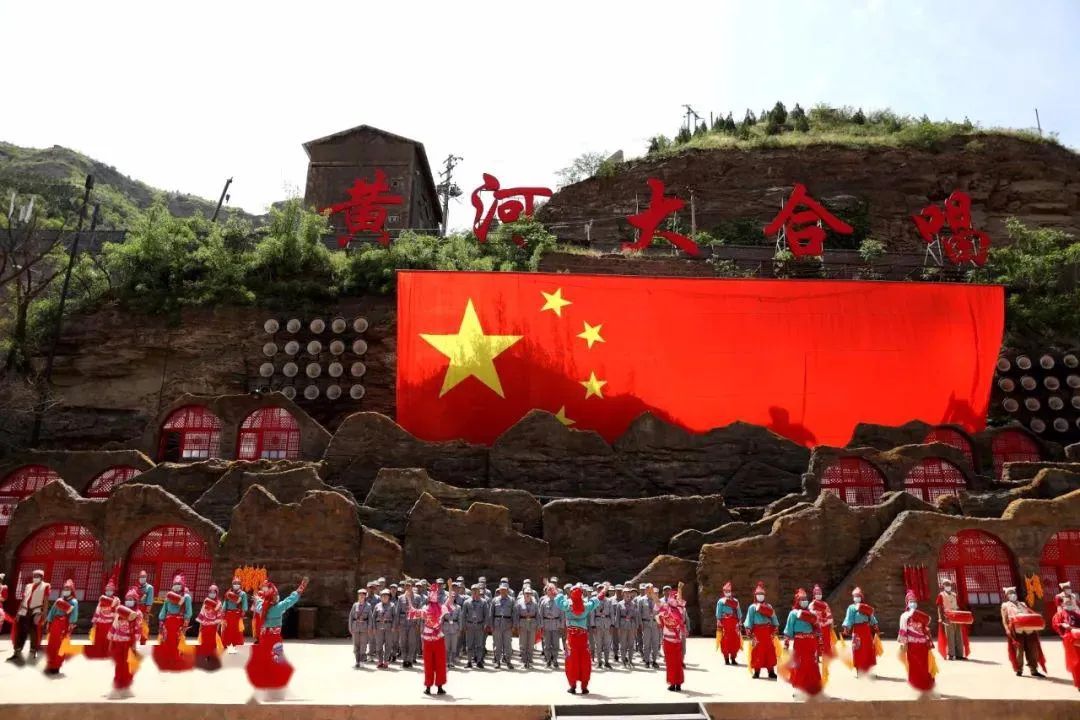
Due to the change of seasons and changes in water volume, Hukou Waterfall forms unique four-season landscapes such as underwater smoke, neon water play, and ice peaks hanging upside down.

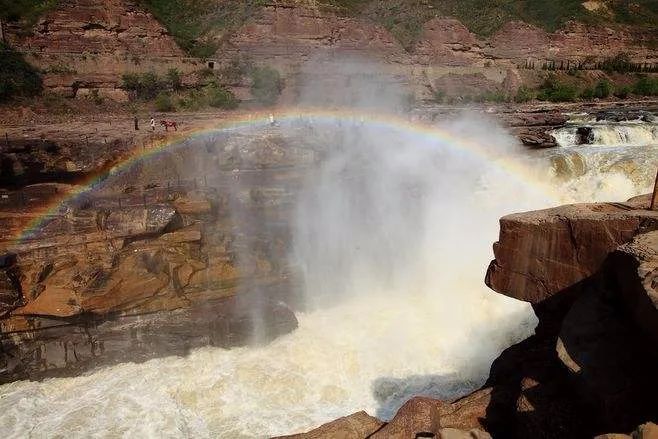
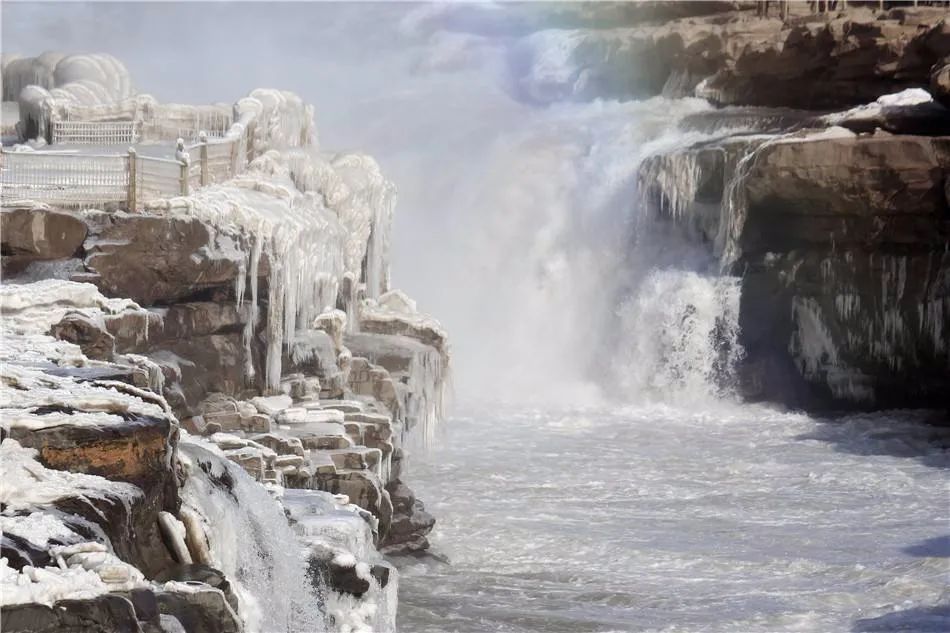
Emperor Xuanyuan is the founder of Chinese civilization. According to historical records, the Yellow Emperor's surname was Gongsun, his given name was Xuanyuan, and his nickname was Youxiong. He was honored as the Yellow Emperor by future generations because of his auspicious soil virtues.
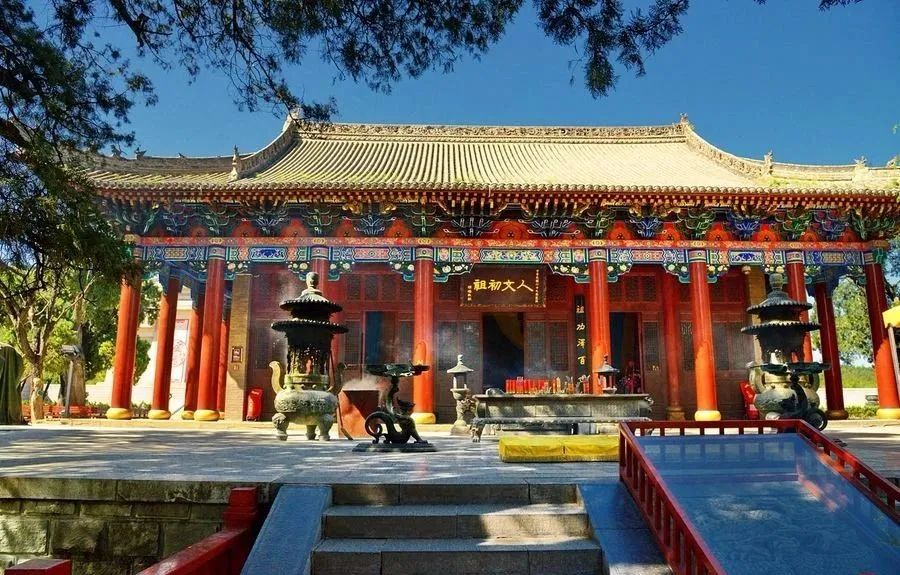
The legendary Yellow Emperor was not only a hero, but also the embodiment of wisdom; he not only created the first country in Chinese history with a common master, but also founded Chinese civilization and was revered as the "first ancestor of humanities."
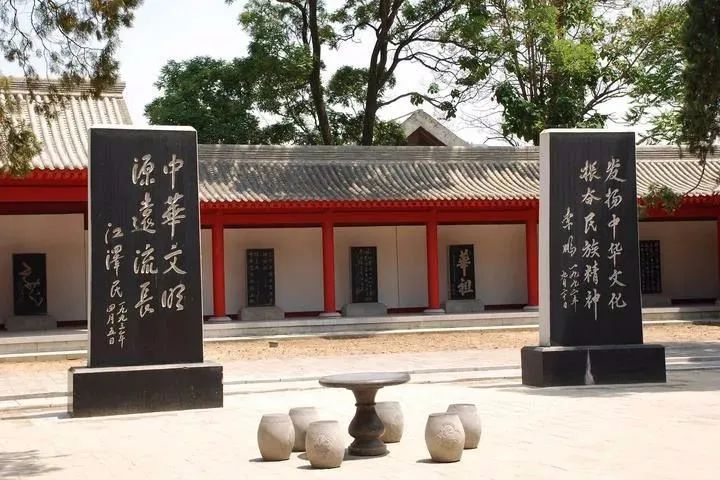
The Mausoleum of the Yellow Emperor is located on the top of Qiaoshan, 1 kilometers north of Huangling County, Yan'an. Sima Qian, a historian of the Han Dynasty, recorded in "Historical Records": "The Yellow Emperor died and was buried in Qiao Mountain." It is said that after the Yellow Emperor attained enlightenment, he ascended to heaven with a dragon here, so the mausoleum is a tomb.

The Huangdi Mausoleum was called "Qiaoling" in ancient times, and the mausoleum was named after the mountain. Qiaoshan is home to the largest group of ancient cypresses in my country. There are more than 80,000 towering ancient cypresses on the mountain, including more than 30,000 ancient cypresses that are more than a thousand years old.
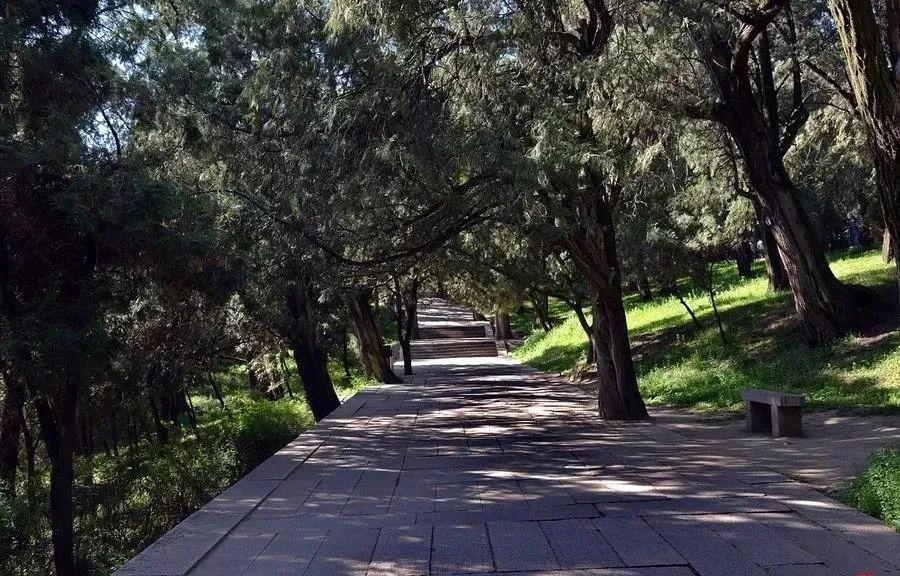
In 1942, the Third Administrative Supervision District of Shaanxi Province renamed the Qiaoling Mausoleum as the "Mausoleum of the Yellow Emperor". In the winter of the same year, Chiang Kai-shek inscribed the three characters "Mausoleum of the Yellow Emperor" and built a stone monument in front of the Mausoleum of the Yellow Emperor. Since then, the name Huangdi Mausoleum has been used to this day.

The Mausoleum of the Yellow Emperor is a place where feudal emperors of all dynasties worshiped the Yellow Emperor. The earliest sacrifice to the Yellow Emperor in history began in the third year of Qin Linggong. Since Emperor Wu of the Han Dynasty personally led an army of 180,000 people to worship the Yellow Emperor's Mausoleum, this place has been the place where successive dynasties held national sacrifices.
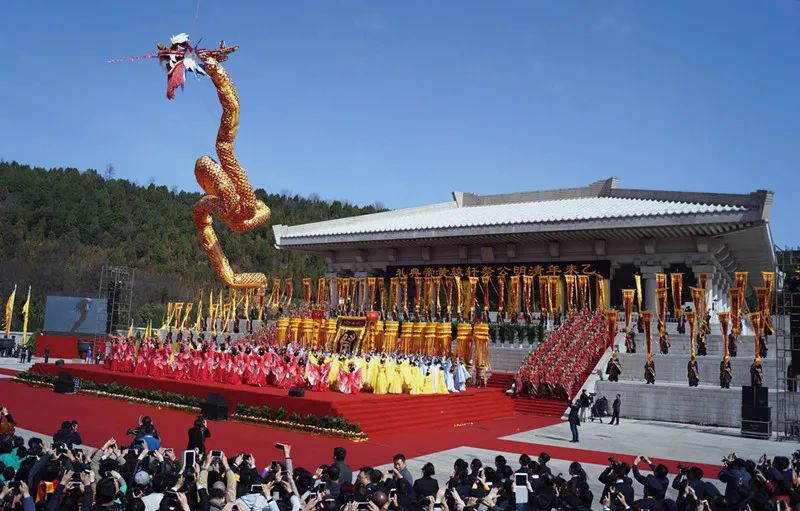
The tour of the Huangdi Mausoleum Scenic Area is divided into two parts: the Xuanyuan Temple area at the foot of the mountain and the Yellow Emperor Mausoleum on the mountain. The main attractions in the Xuanyuan Temple area include the entrance square, Xuanyuan Bridge and Longhu Lake, Longwei Road, Shanmen, 16 ancient cypresses planted by the Yellow Emperor, Chengxin Pavilion, Stele Pavilion and Stele Corridor, Humanities First Ancestor Hall, and Sacrifice Square , Xuanyuan Hall, etc.

The mountain gate of Xuanyuan Temple is a granite building imitating the Han Dynasty, which is solemn, simple and majestic. The three words "Xuanyuan Temple" written on the plaque on the mountain gate were inscribed by Jiang Dingwen, the former chairman of the Shaanxi Provincial Government of the Kuomintang, during the Qingming Festival in 1938.
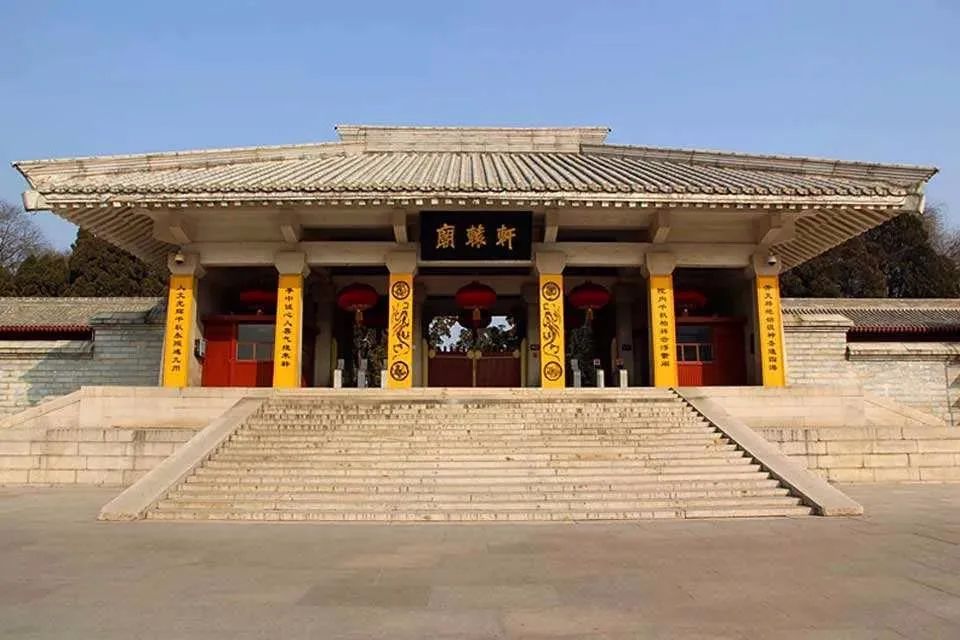
There are 16 ancient cypresses in Xuanyuan Temple, the most precious of which are "Cypress Planted by the Yellow Emperor's Hands" and "Cypresses Hanged by Han Wu". The cypress planted by the Yellow Emperor is about 19 meters high. It is said that this cypress was planted by the Yellow Emperor of Xuanyuan himself. It has been 5,000 years ago. It is the oldest cypress in the world. It is still strong and tall, and its crown covers the sky. .
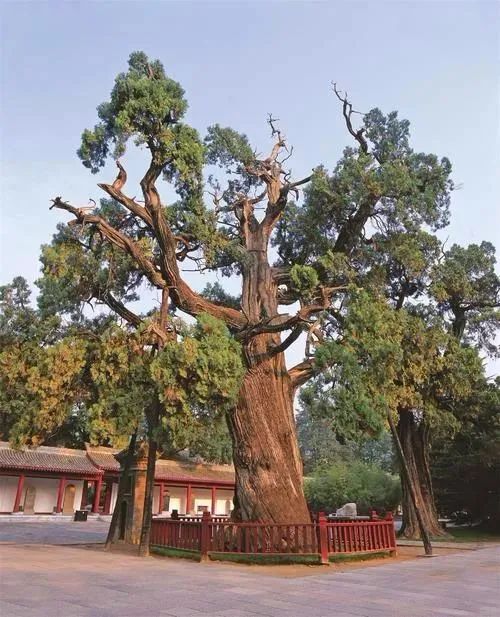
The Hall of the First Ancestor of Humanities is the main hall for worshiping Emperor Xuanyuan and is also the main building of the entire Xuanyuan Temple. It was rebuilt in the Ming Dynasty and underwent a large-scale reconstruction in 1959. Hanging on the lintel of the main hall is a large plaque inscribed "Founder of Humanity" by former Kuomintang general Cheng Qian when he paid homage to the mausoleum in 1938.
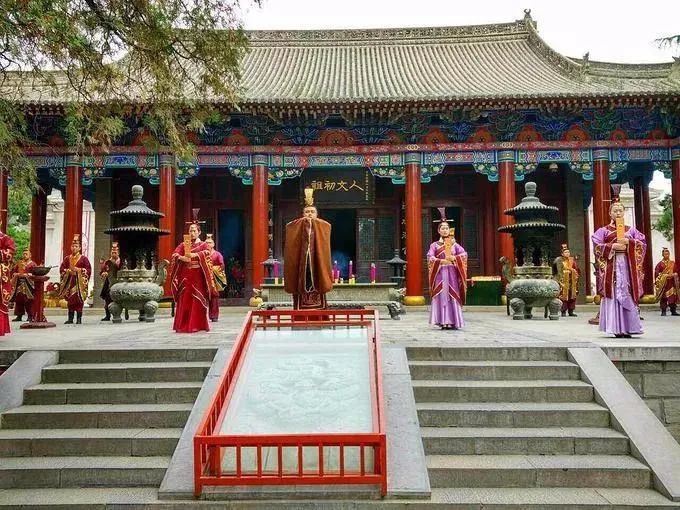
Xuanyuan Hall is located at the north end of the square and is currently the most majestic granite building in the country. During the sacrificial ceremony, this place is used to display sacrificial vessels, ritual vessels and sacrifices.
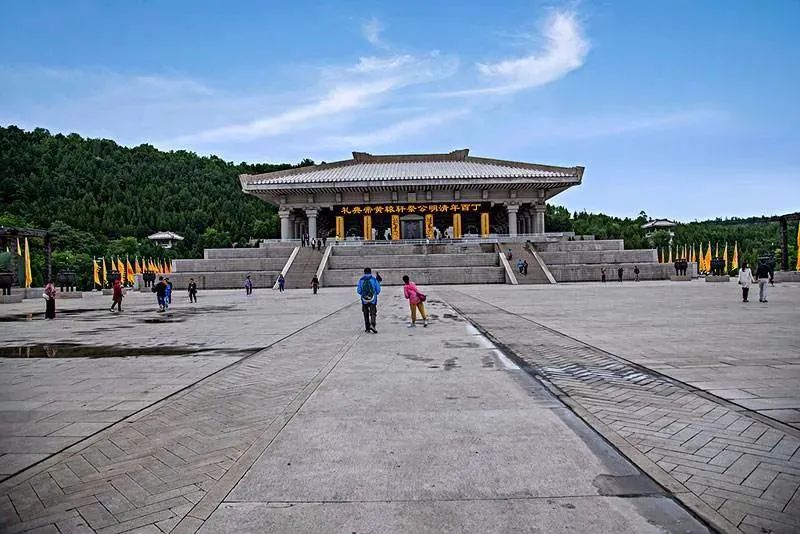
The entire hall is surrounded by 36 stone pillars to form a square space of 40×40 meters. There are 9 stone pillars on each side, which means welcoming the world. The descendants of Yan and Huang from Kyushu came to pay homage to the Yellow Emperor; in the center of the roof of the main hall is a circular skylight with a diameter of 14 meters, which means "the sky is round and the earth is round"; in the center of the main hall is a ceiling with a height of 7.6 meters Xuanyuan Yellow Emperor relief stone statue.

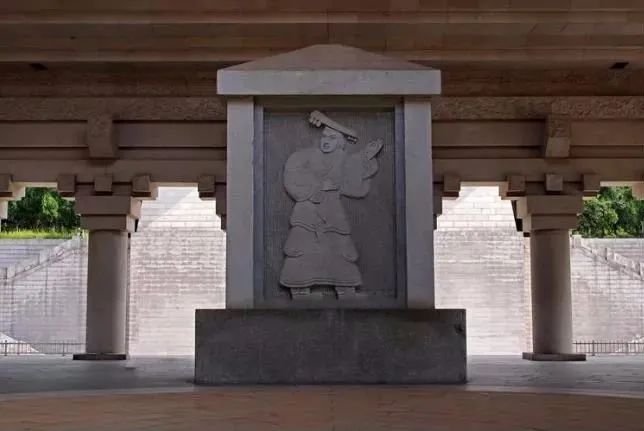
The main attractions in the Huangdi Mausoleum area on the top of the mountain include: Xiama Stone, Hanwu Immortal Platform, Lingxing Gate, Sacrifice Pavilion, Emperor's Tomb, Longyu Pavilion, etc.
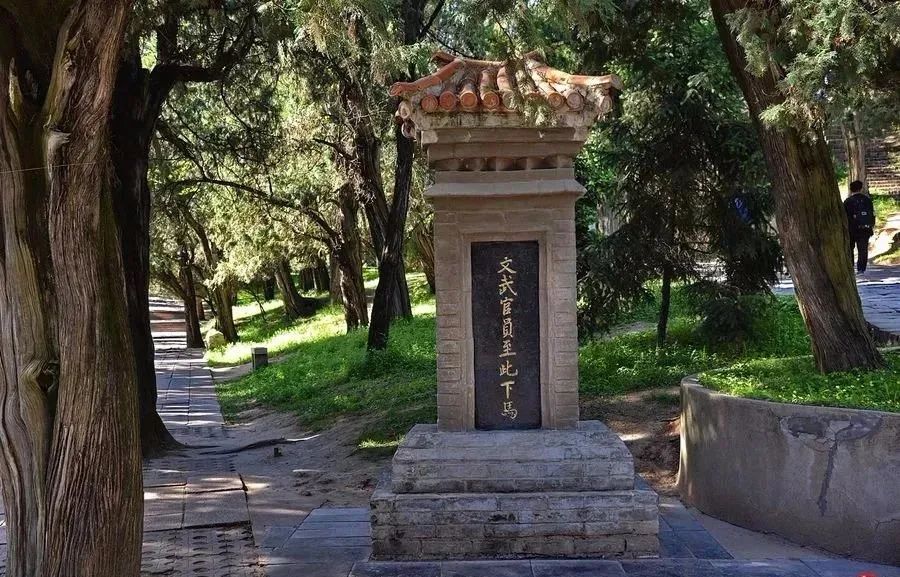
The Immortal Platform of the Han Dynasty was built by Emperor Wu of the Han Dynasty, Liu Che, who led an army of 18 to conquer Shuofang in the north and made a triumphant return. When he stopped to offer sacrifices at the Mausoleum of the Yellow Emperor on his way back. Passing through the Lingxing Gate next to the Hanwu Immortal Platform and climbing to the top of Qiaoshan is the Yellow Emperor’s Tomb.


The emperor's mausoleum is 3.6 meters high and has a circumference of 48 meters. It is surrounded by brick walls and its simple appearance still maintains its original style.
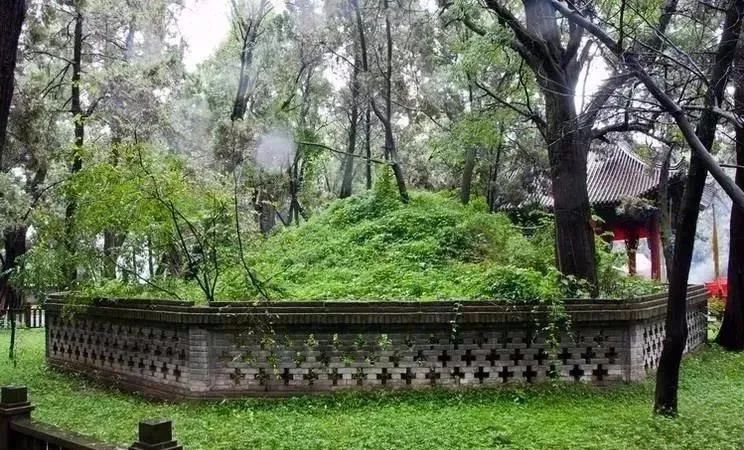
The sacrificial pavilion in front of the mausoleum was built in 33 of the Republic of China. The three characters "Huangdi Mausoleum" on the stone tablet in the pavilion were originally inscribed by Chiang Zhongzheng, but were later erased in 1956. When it was restored in y4>1963, it was replaced with Guo Moruo's inscription. The "Qiaoshan Dragon Control" stone tablet in front of the mausoleum was engraved in the 15th year of Jiajing in the Ming Dynasty. It is the earliest existing stone tablet in the cemetery.


